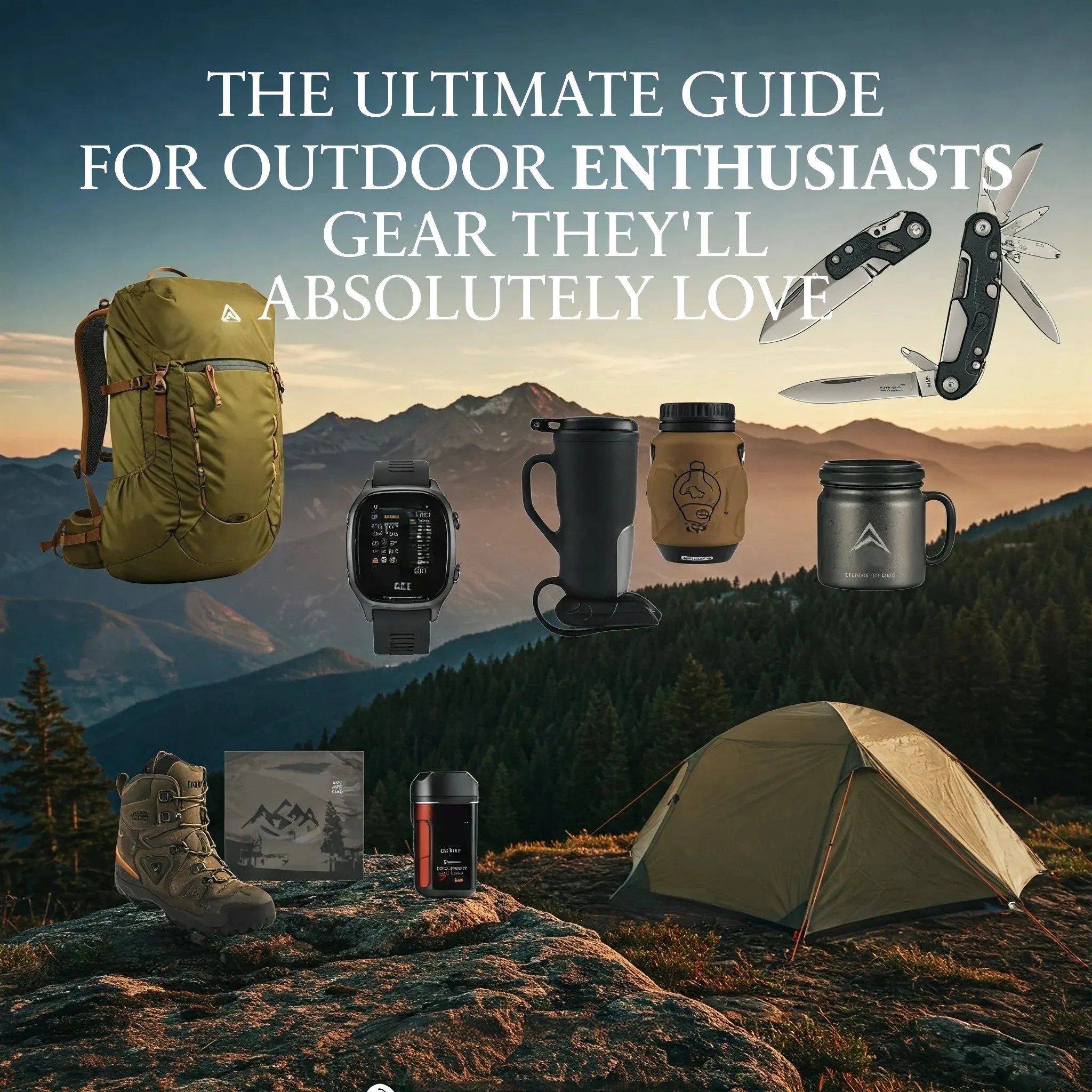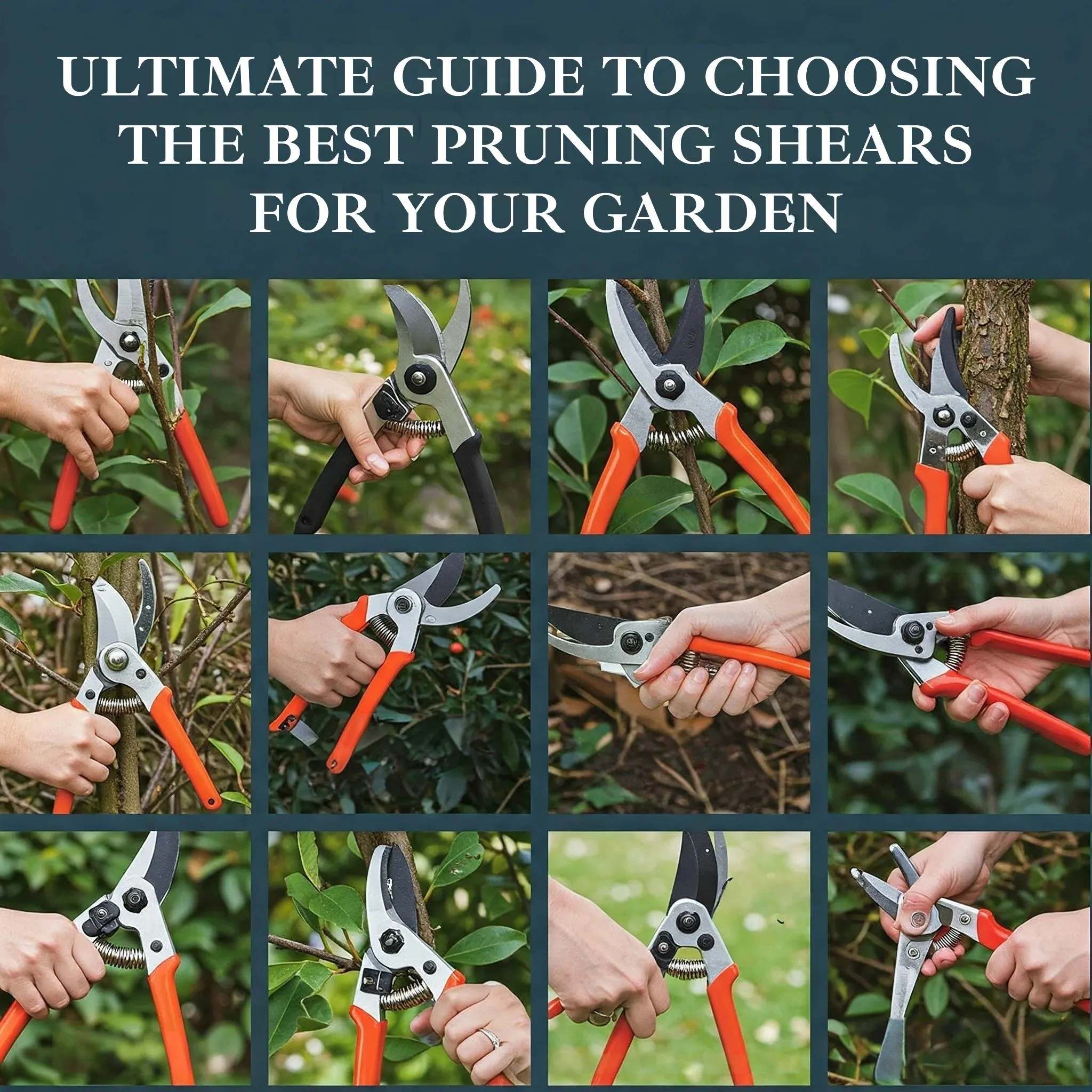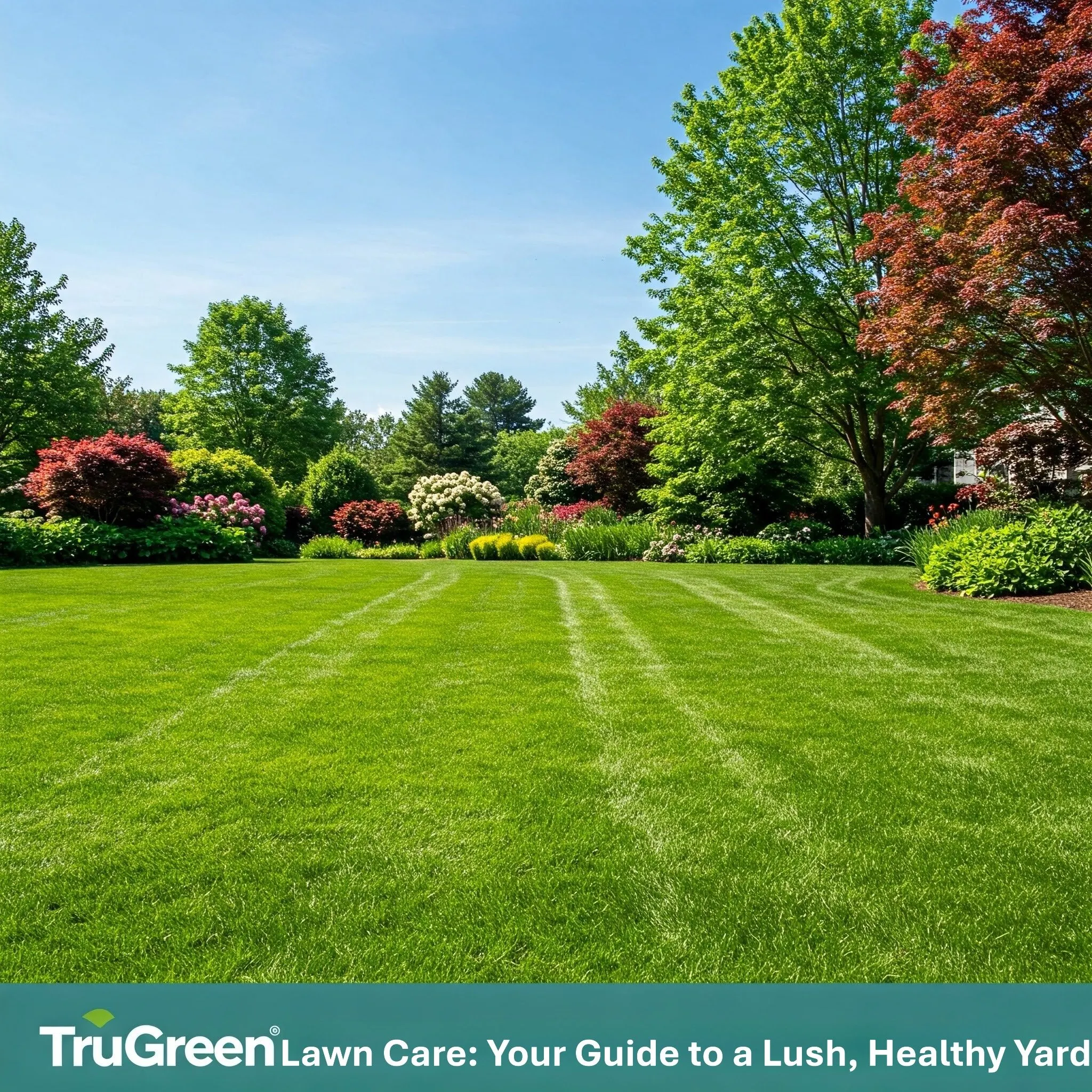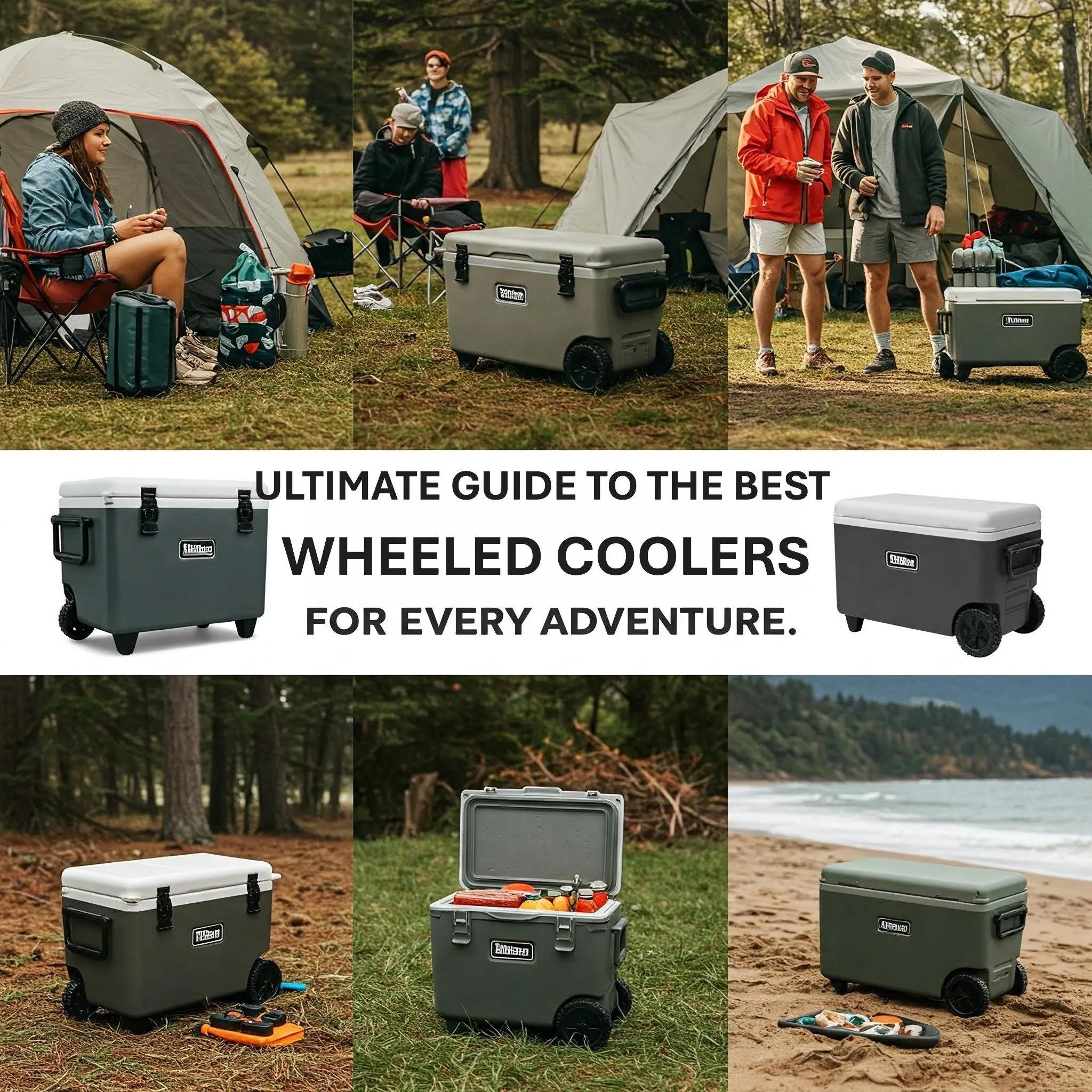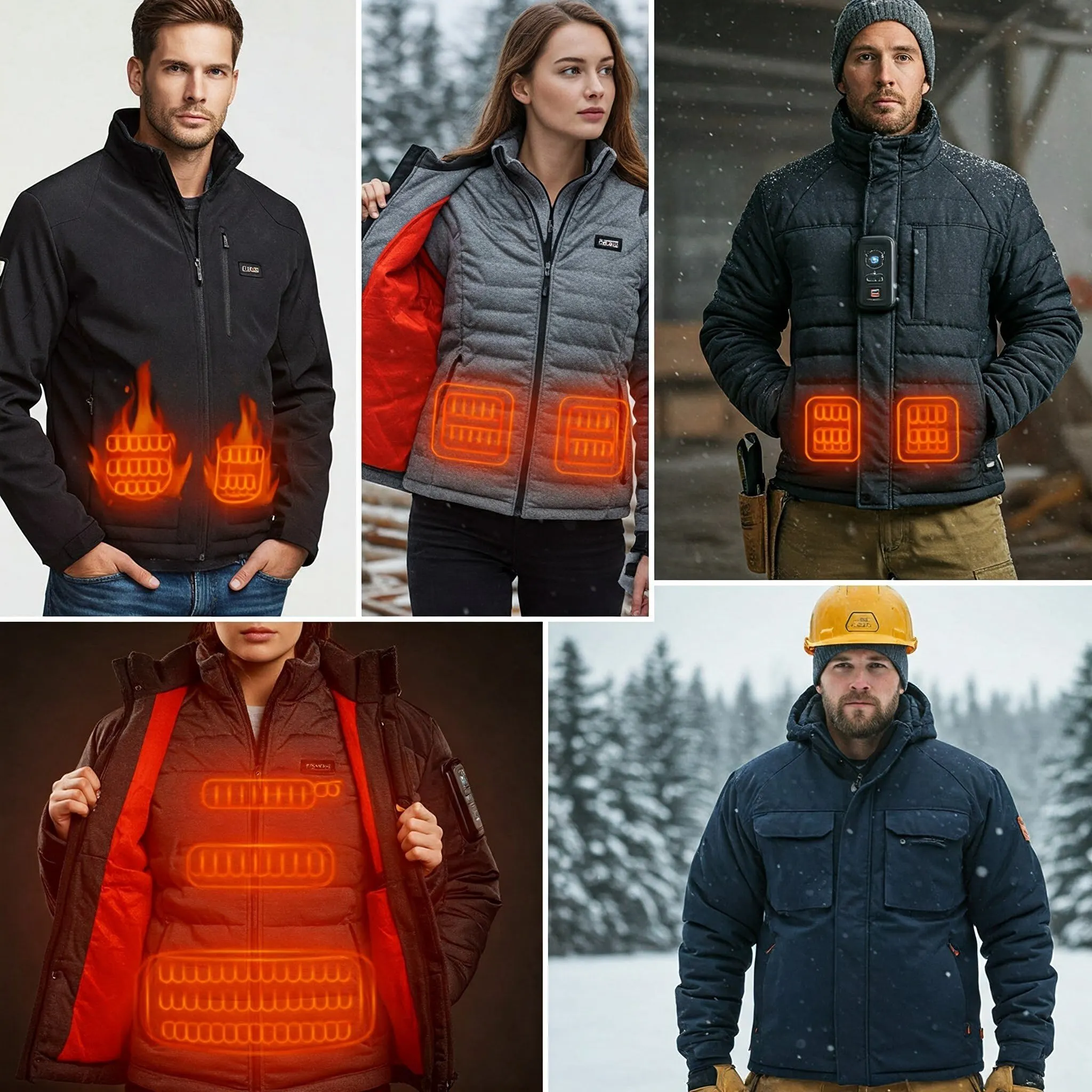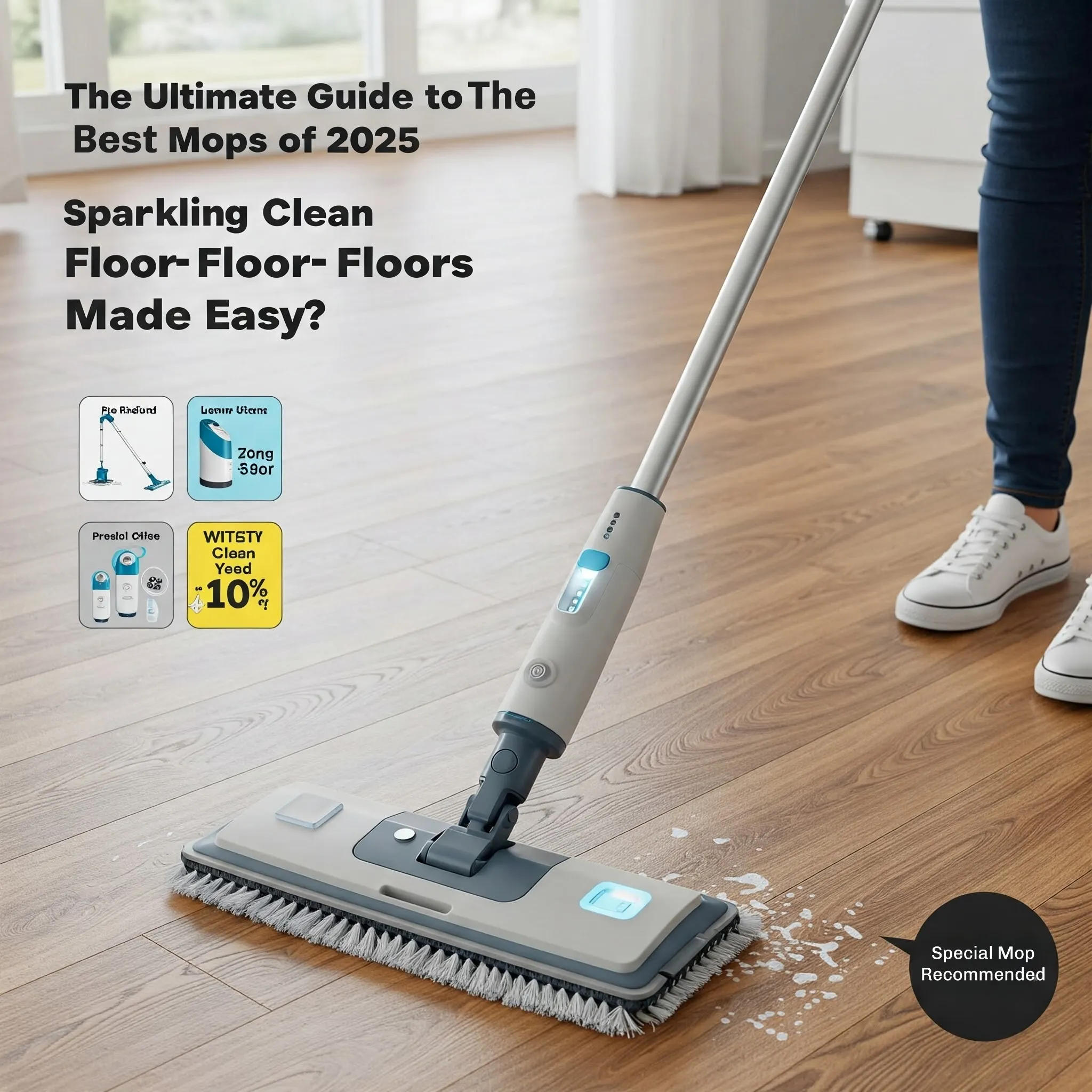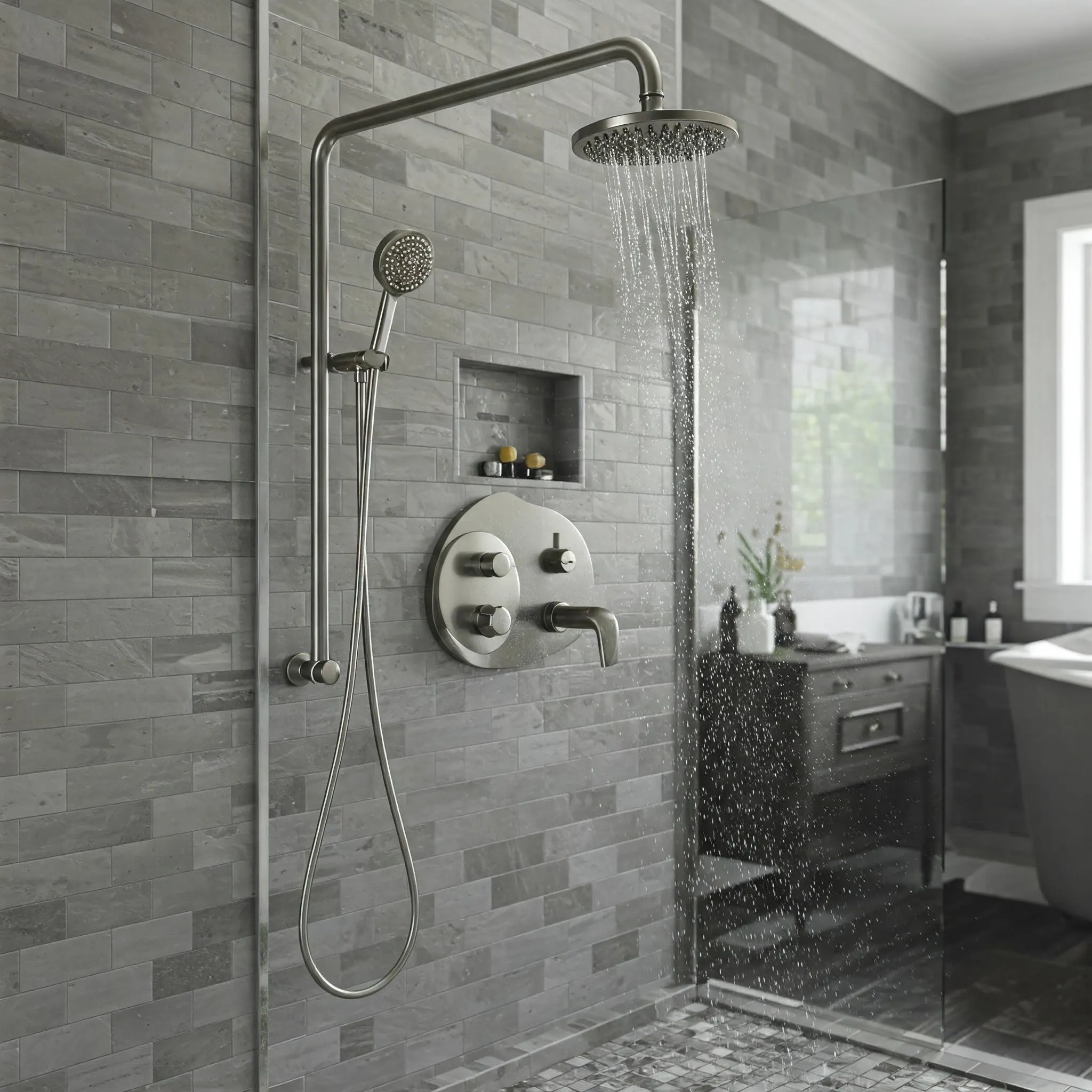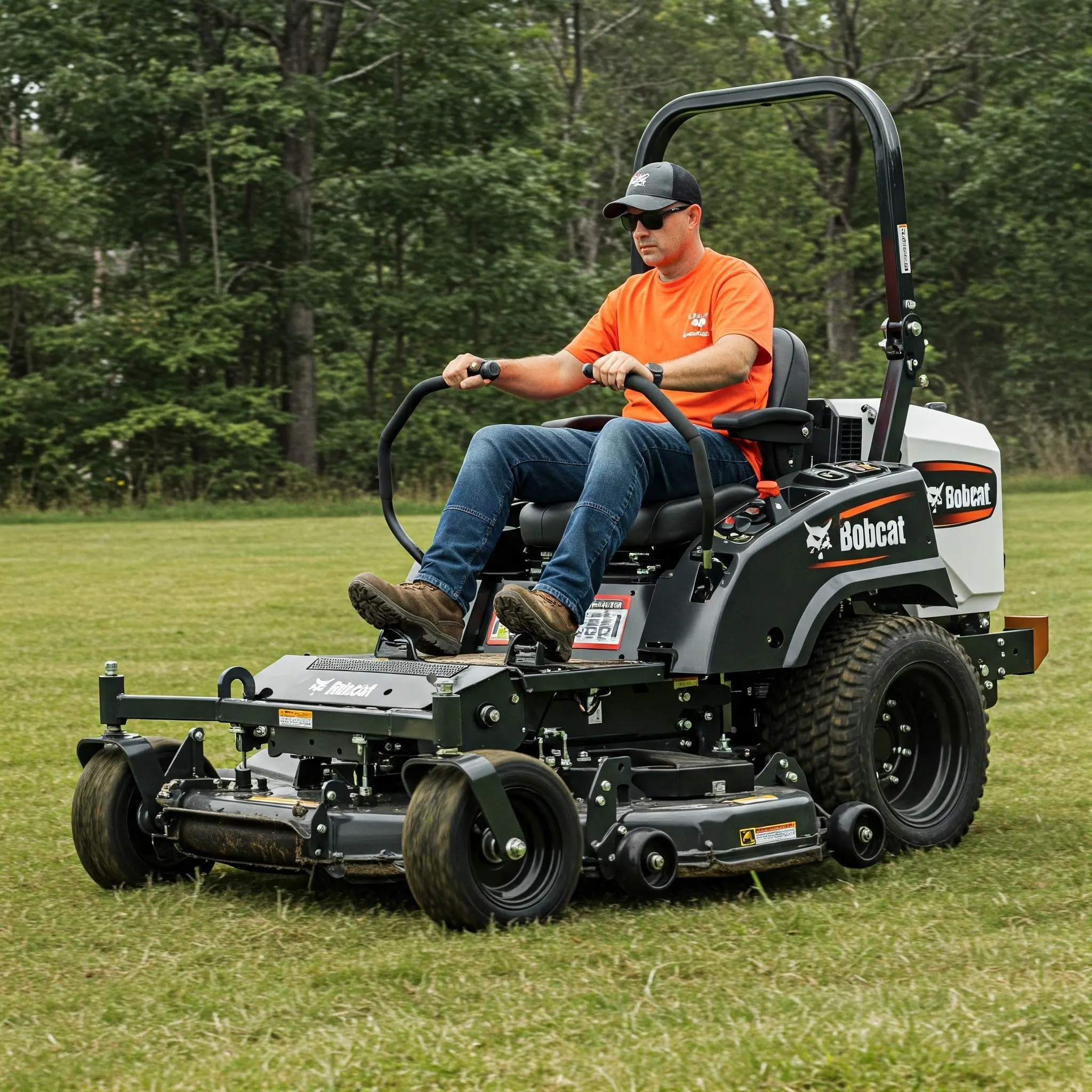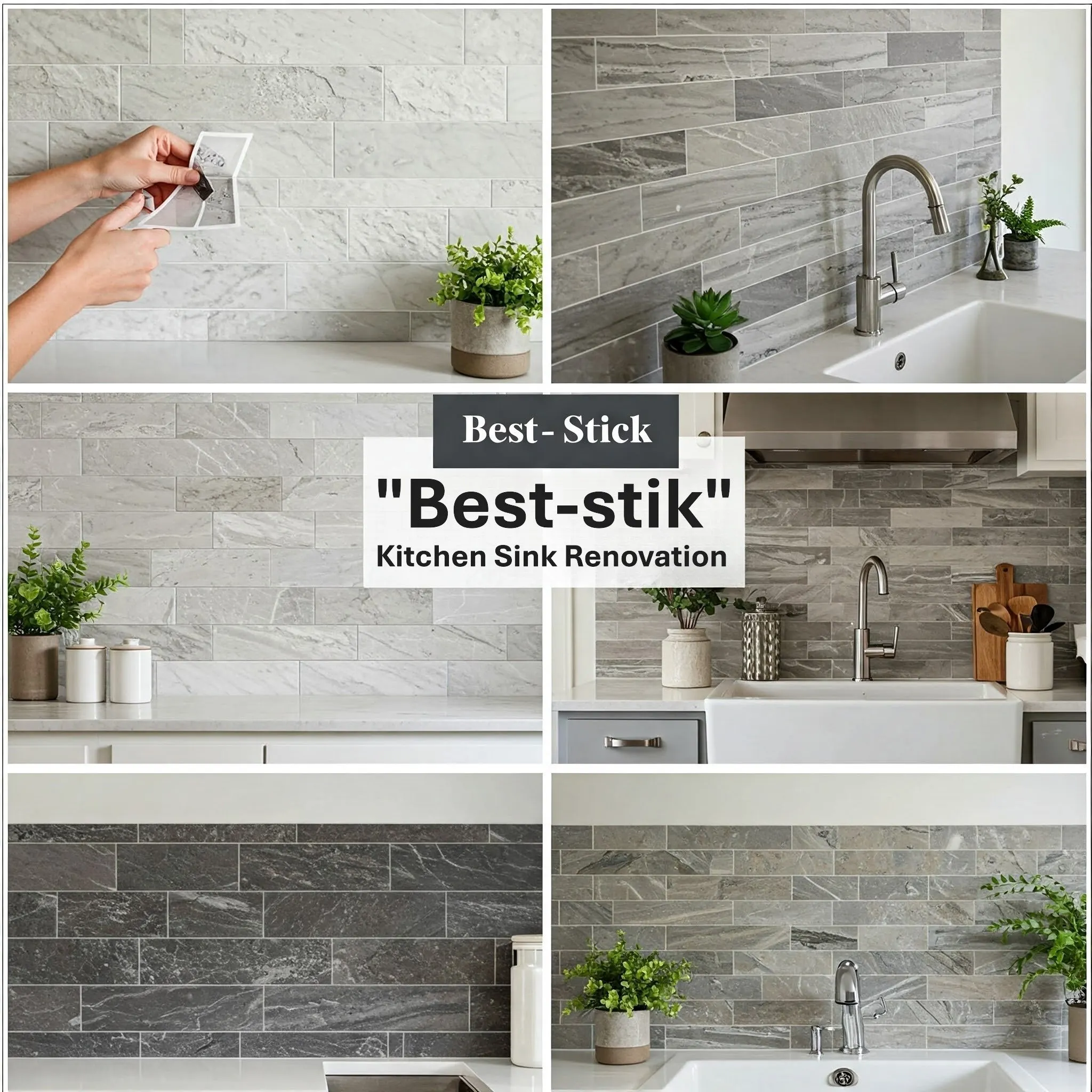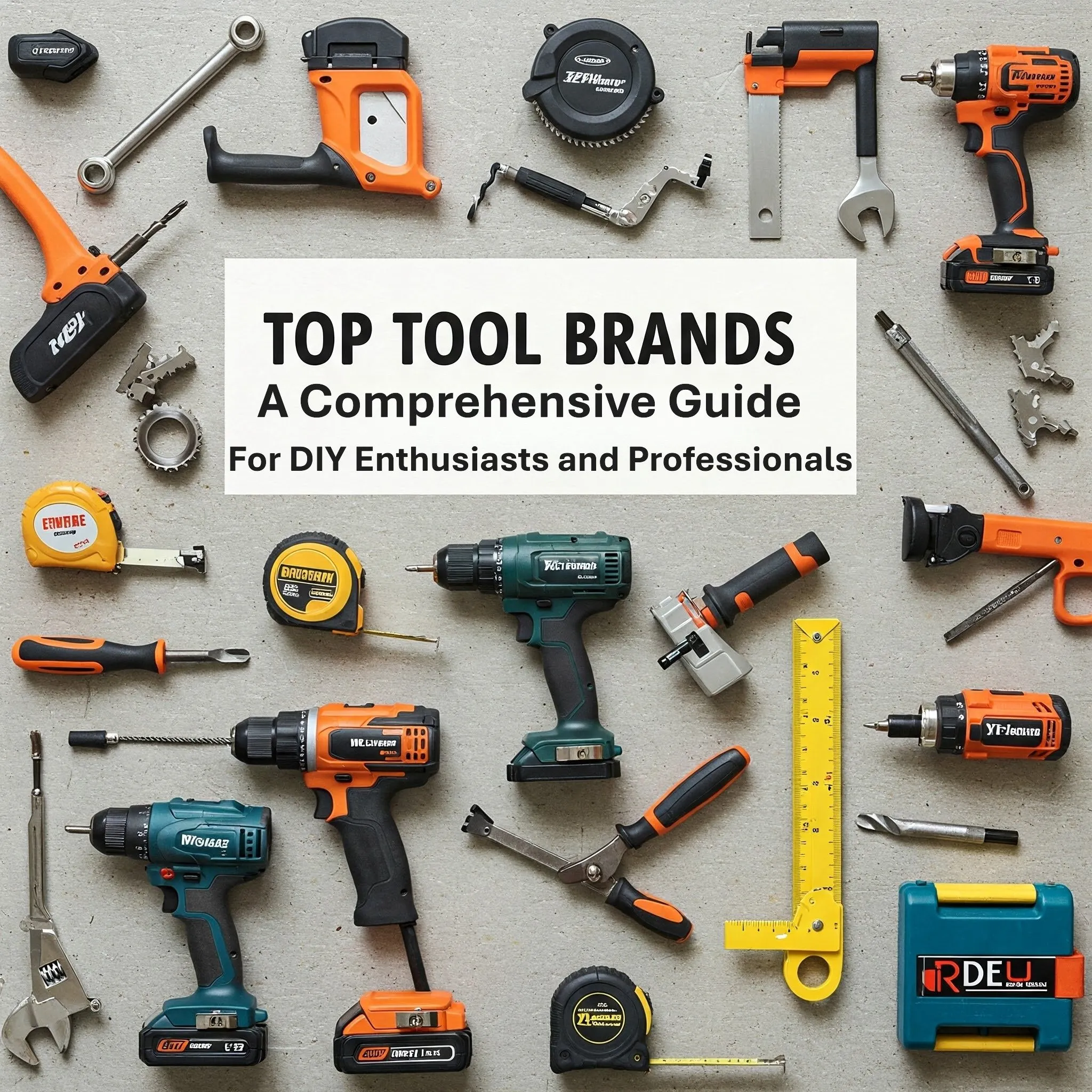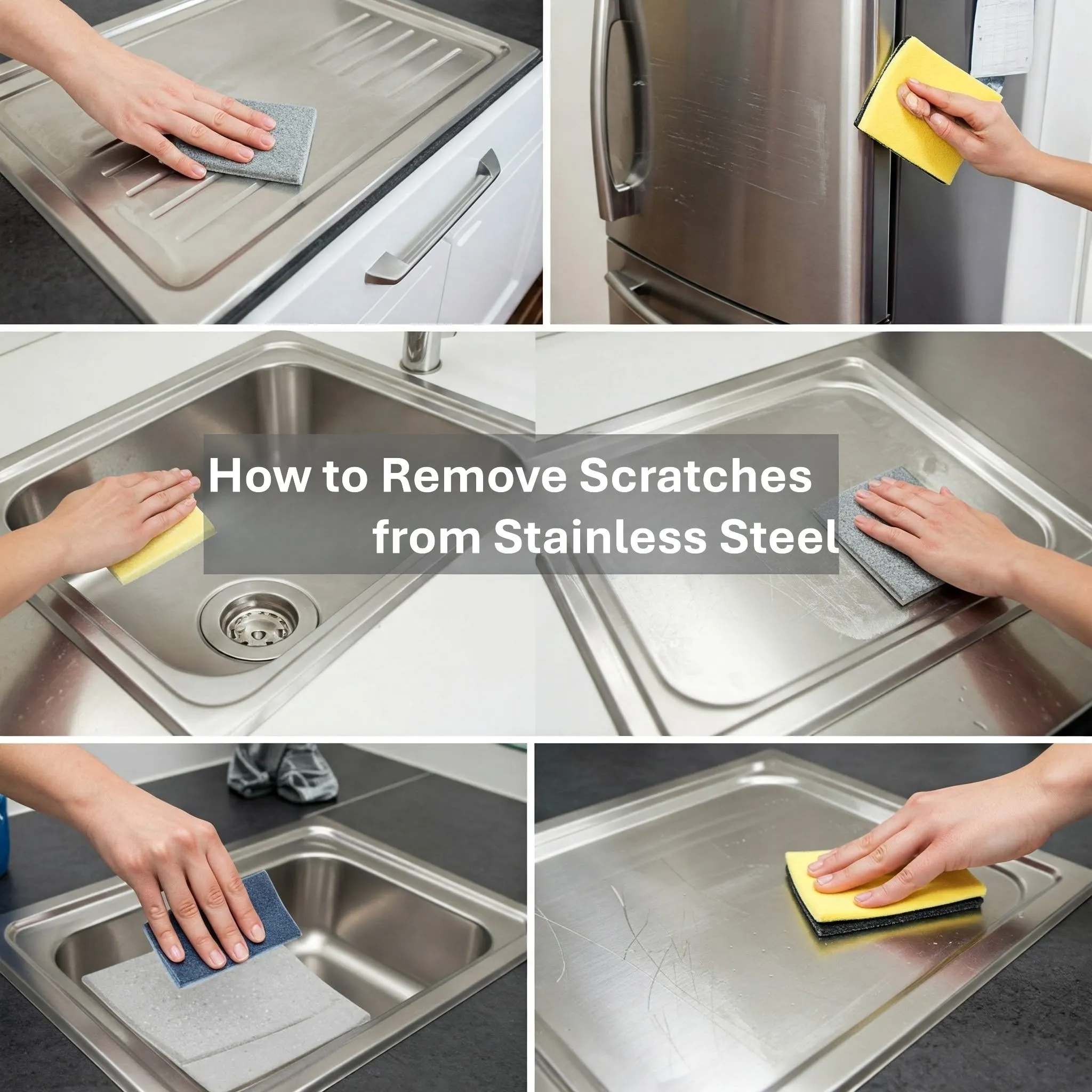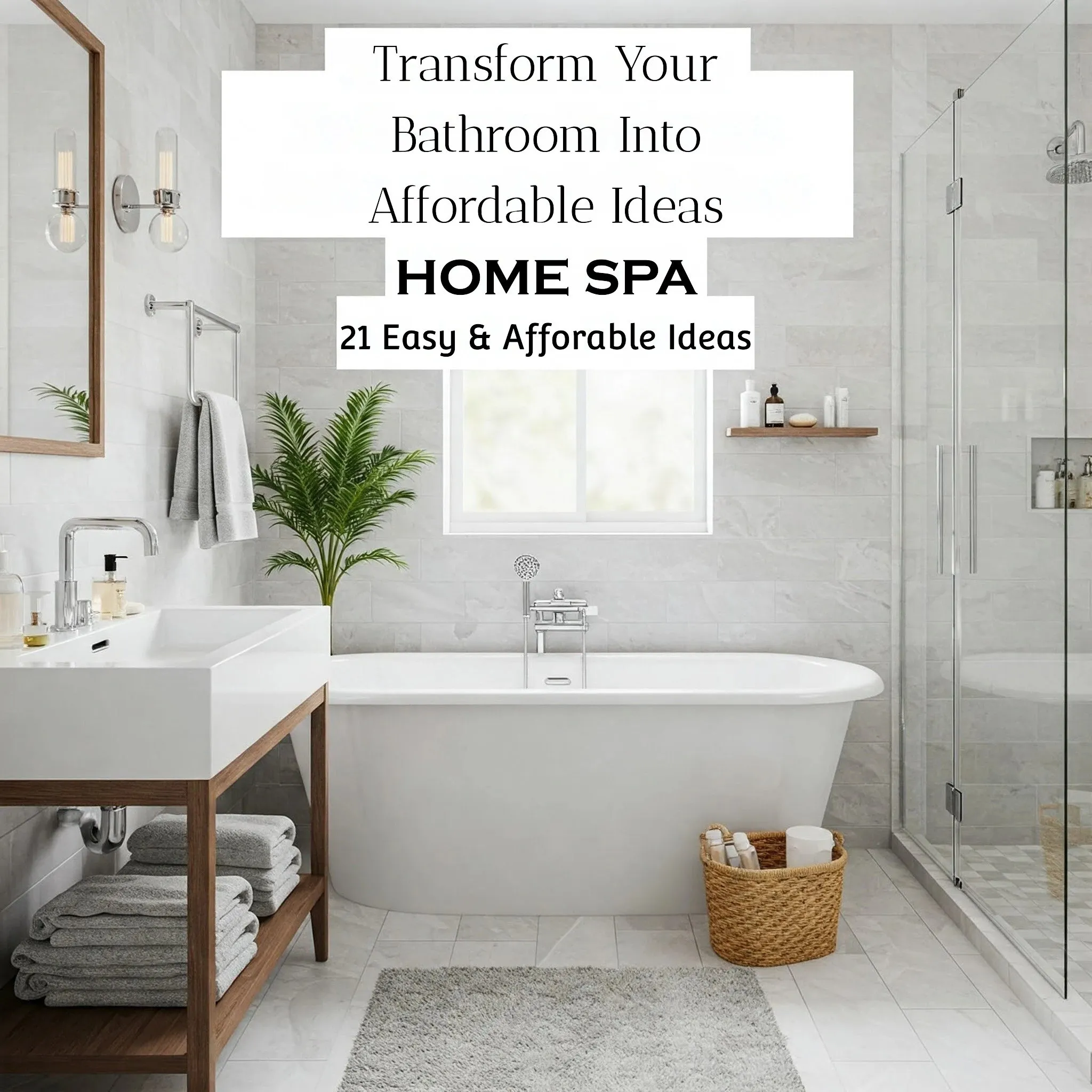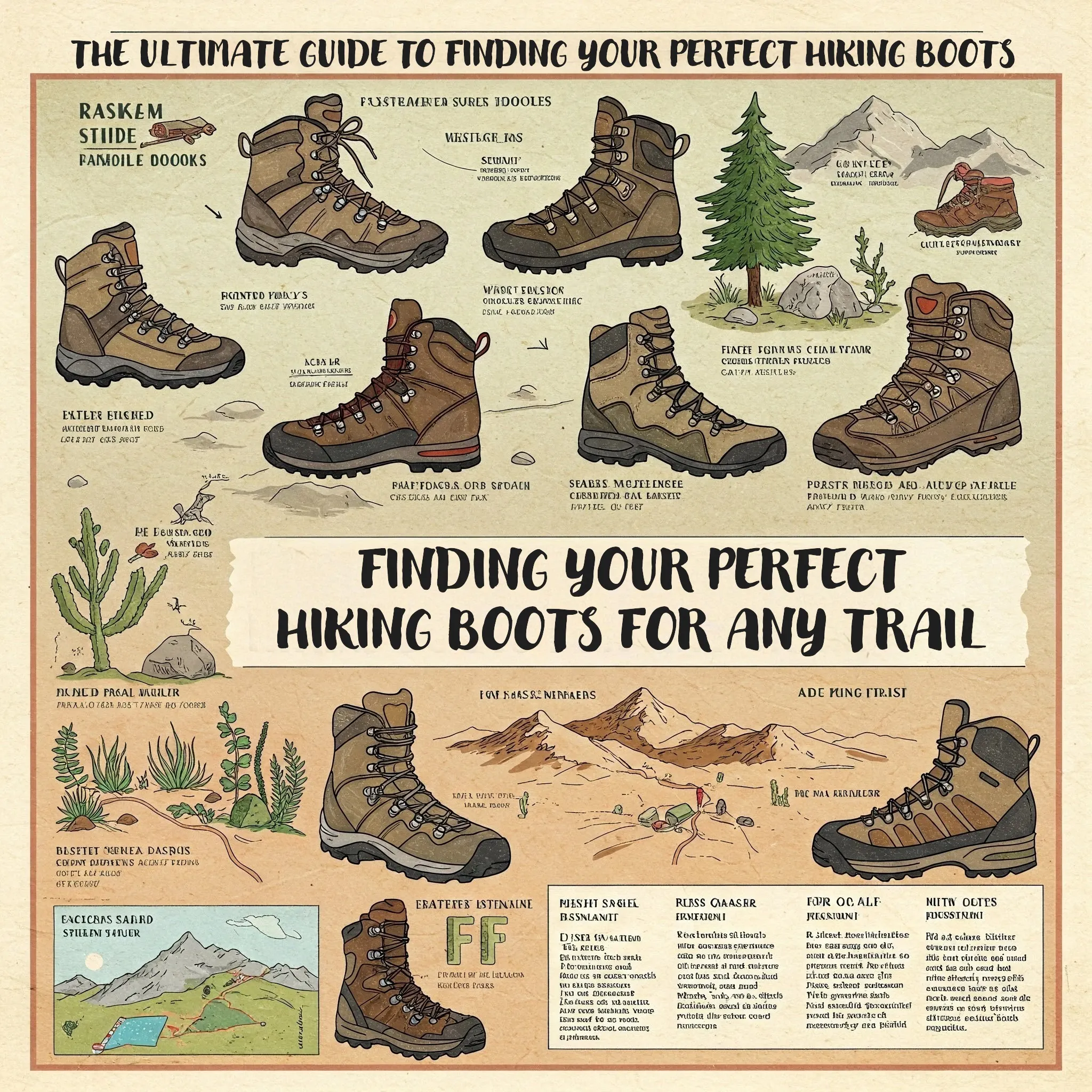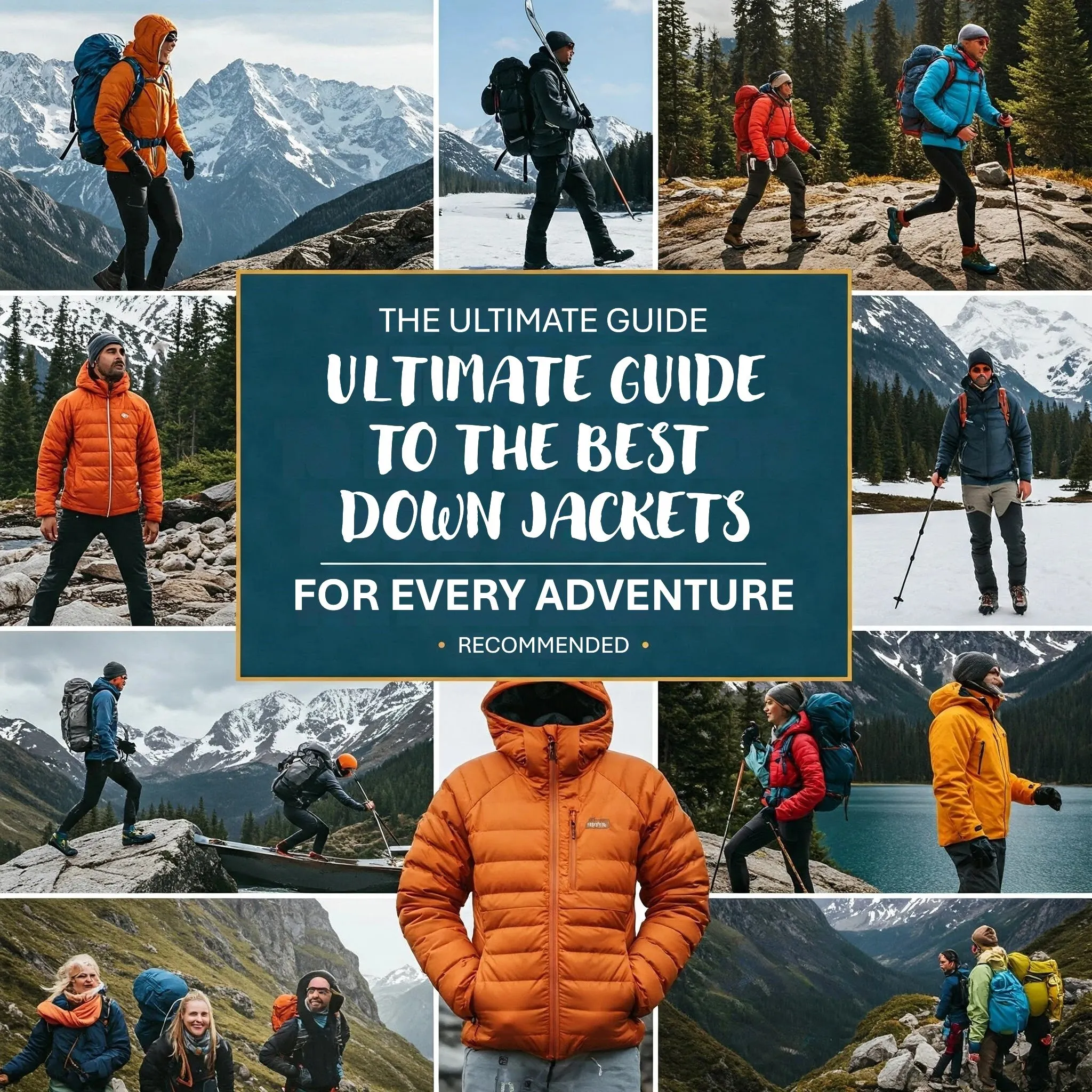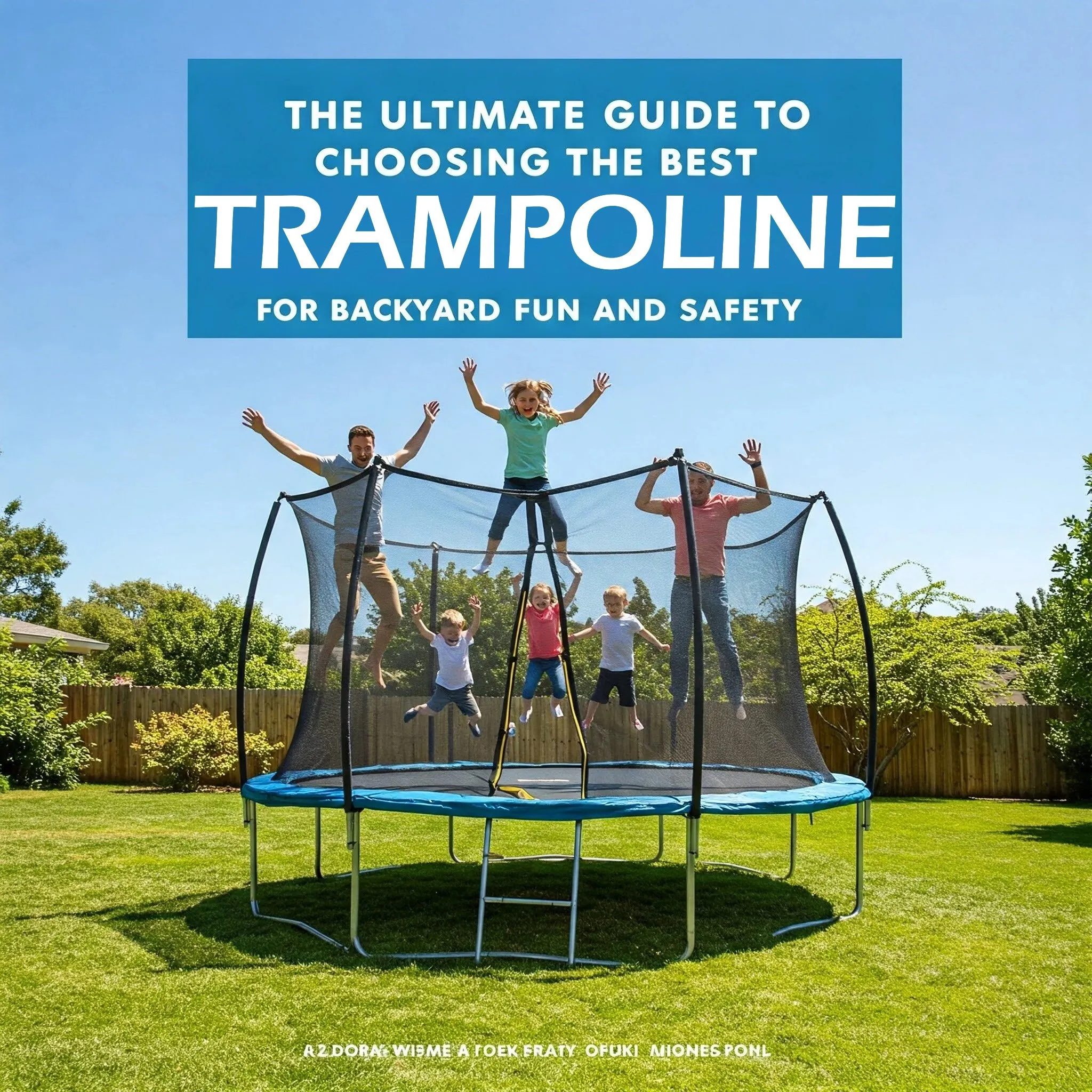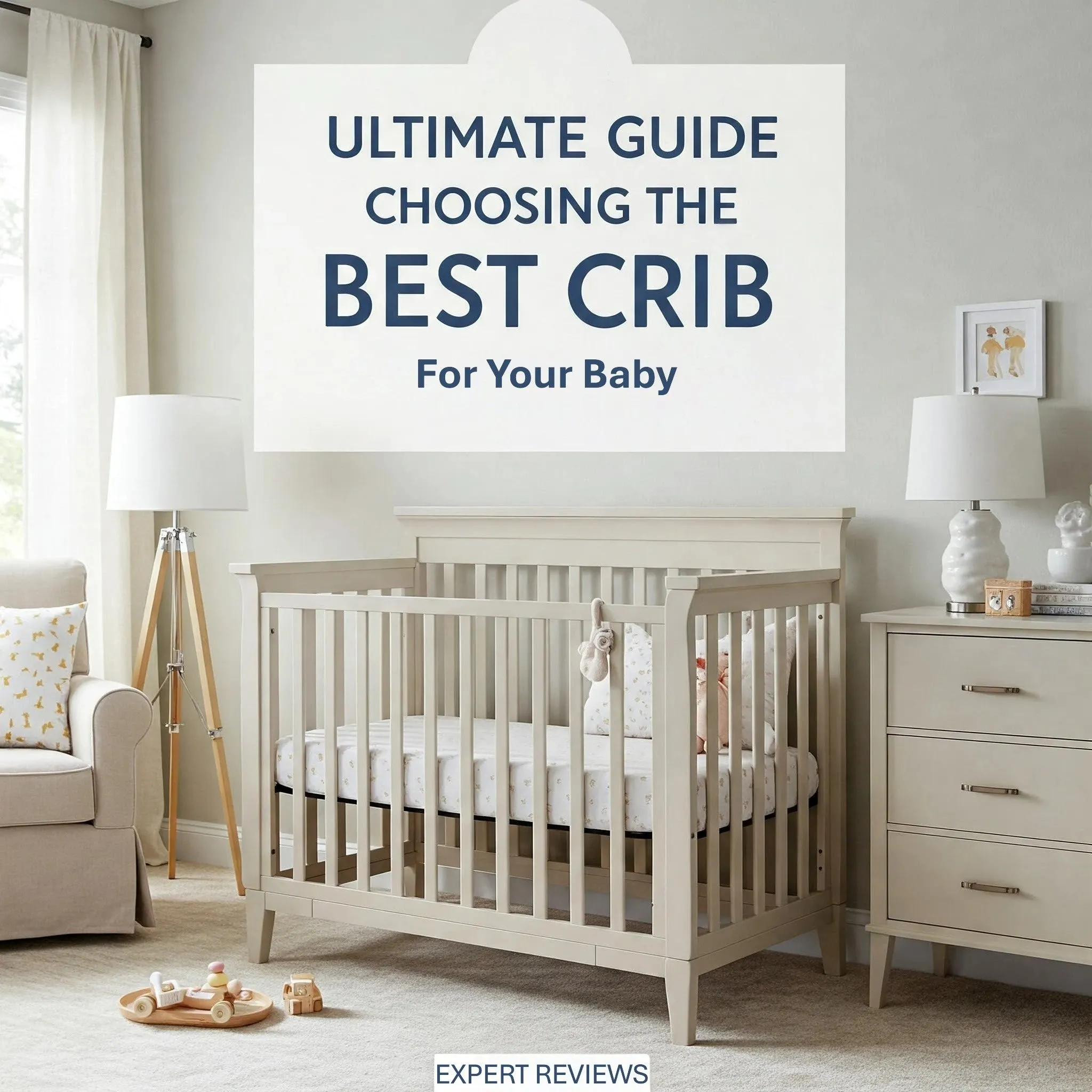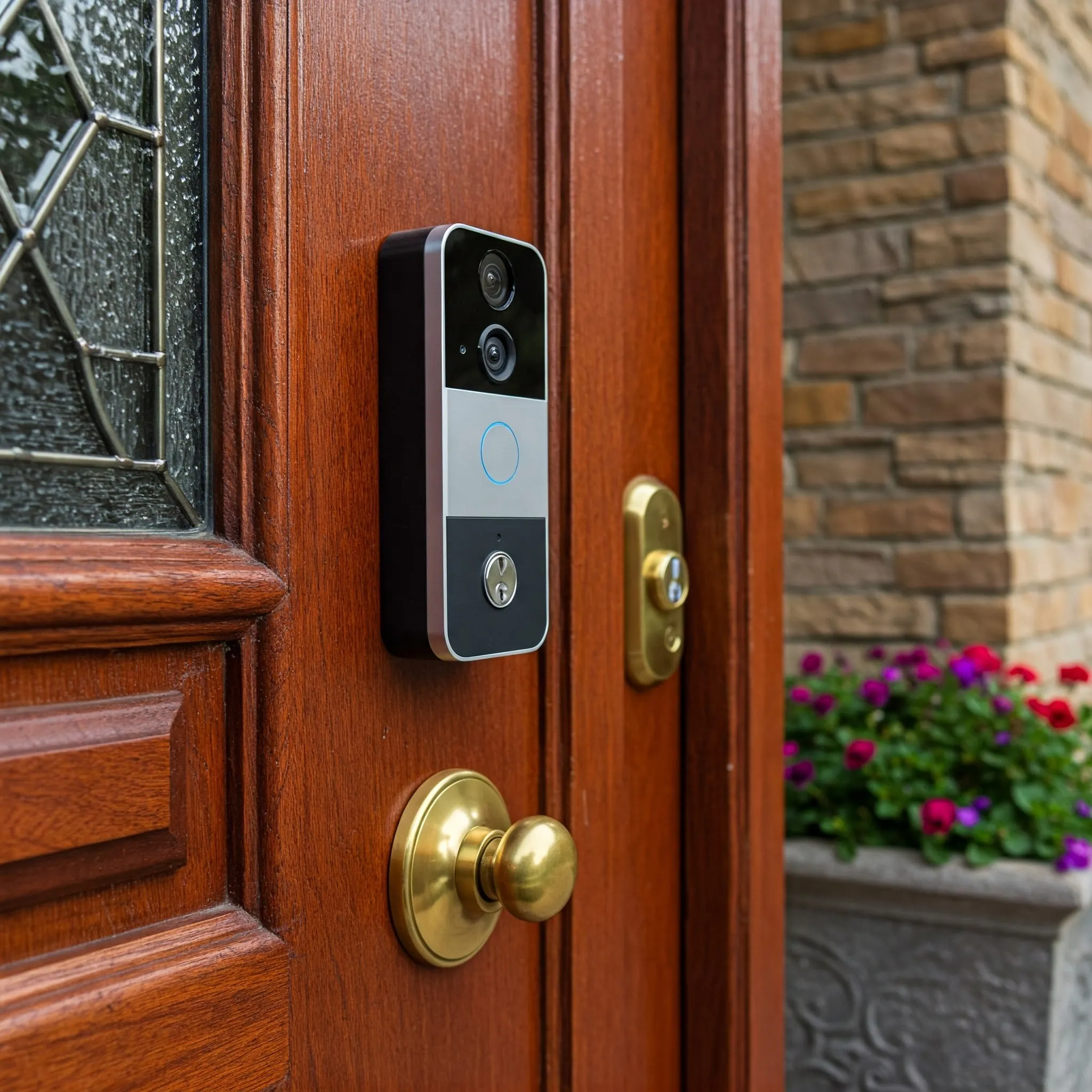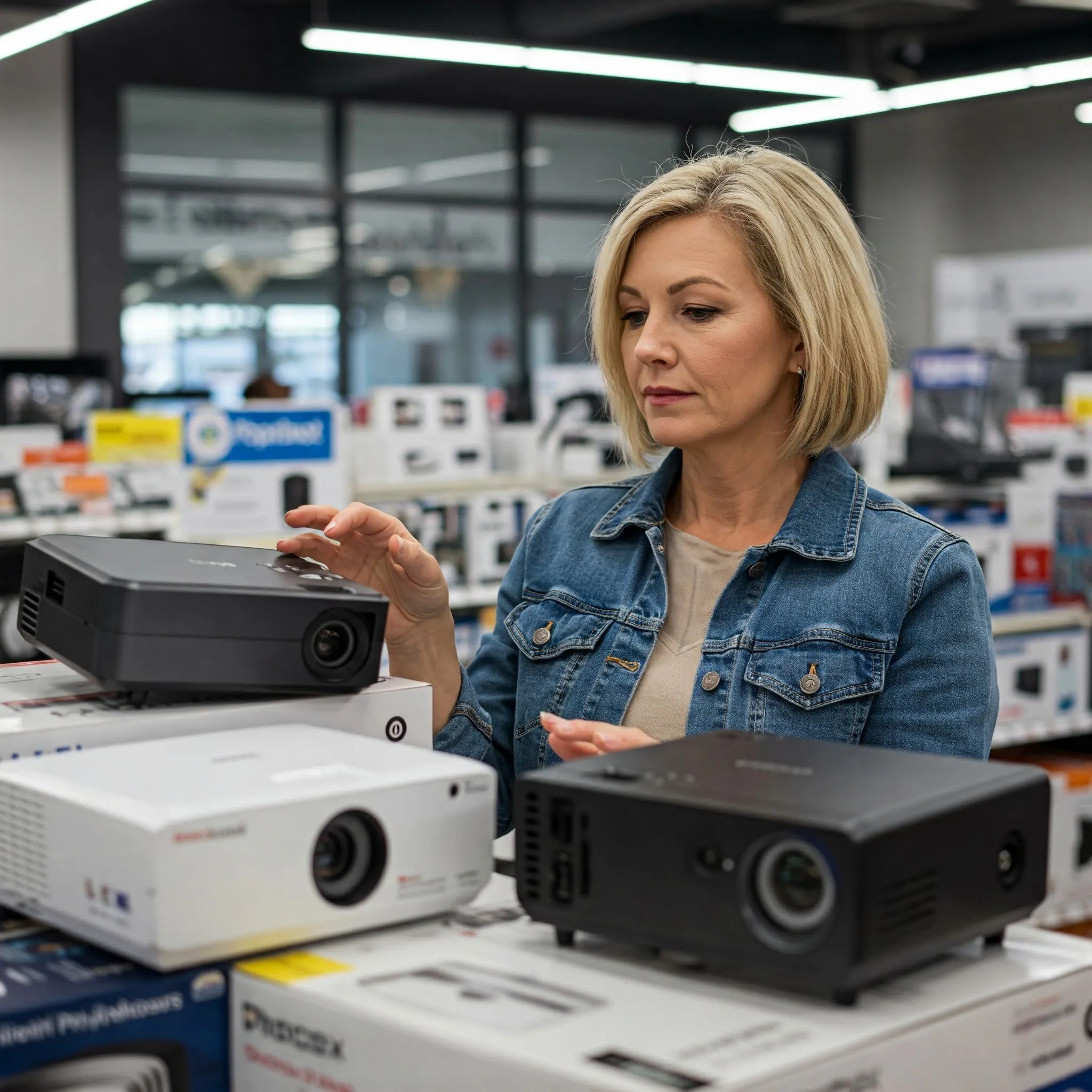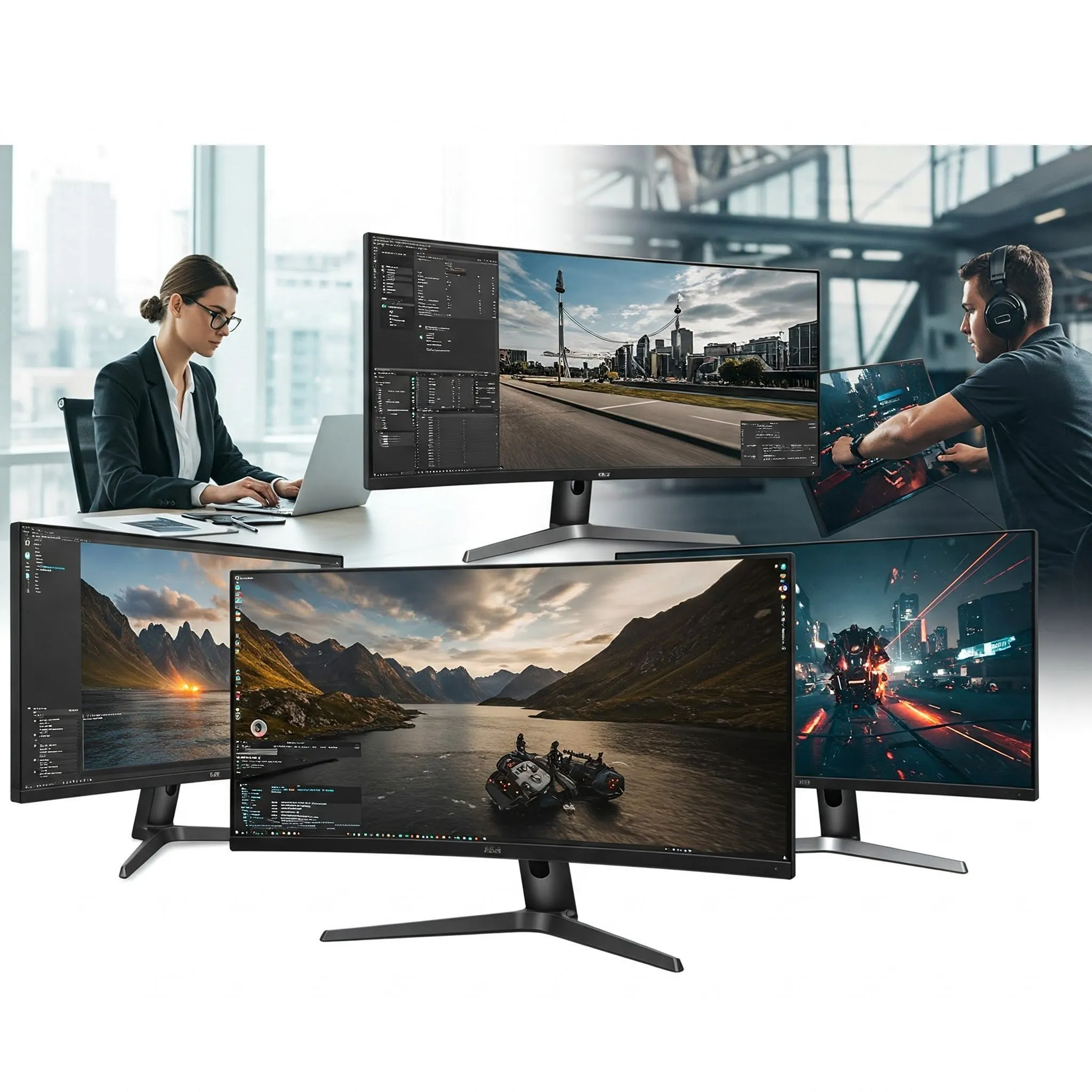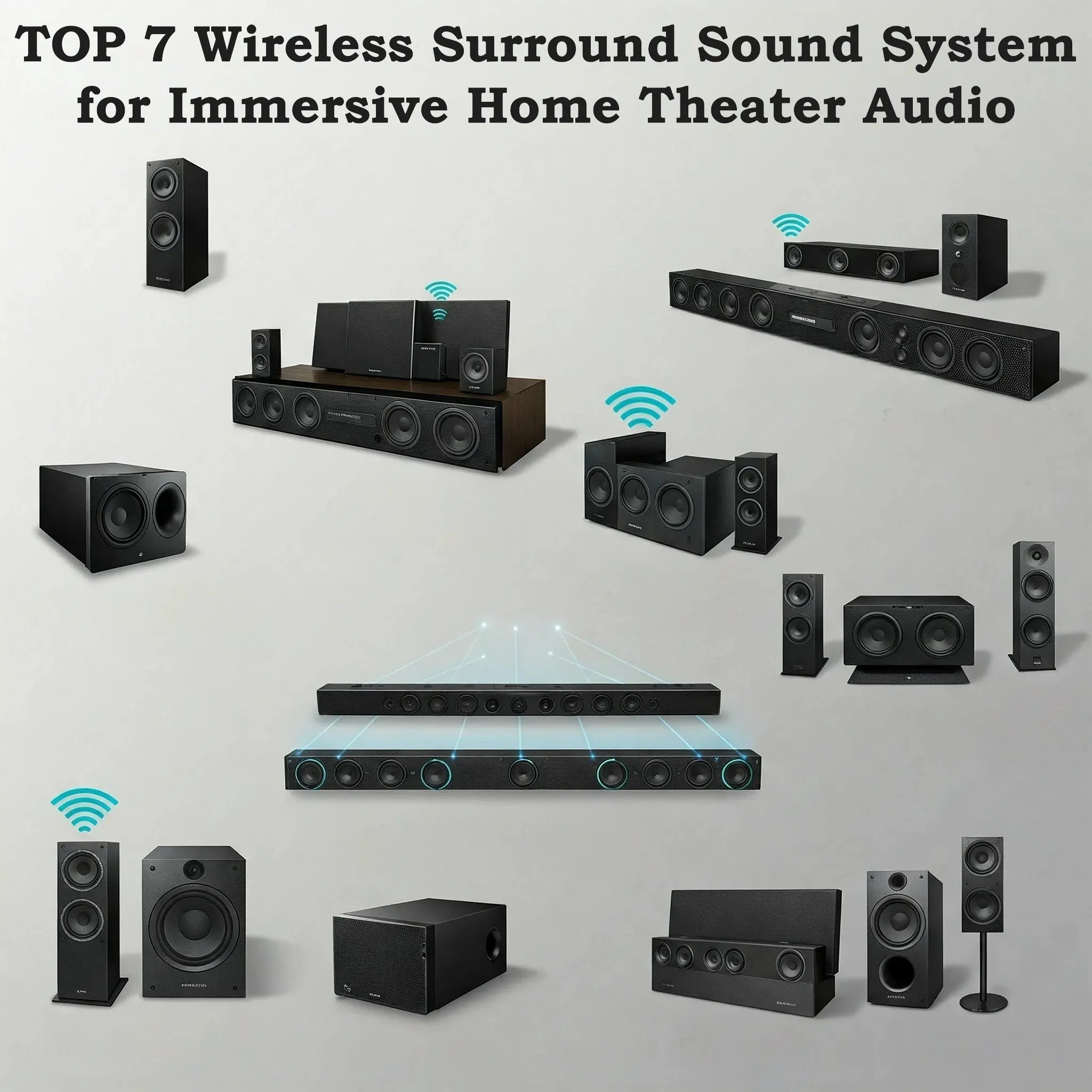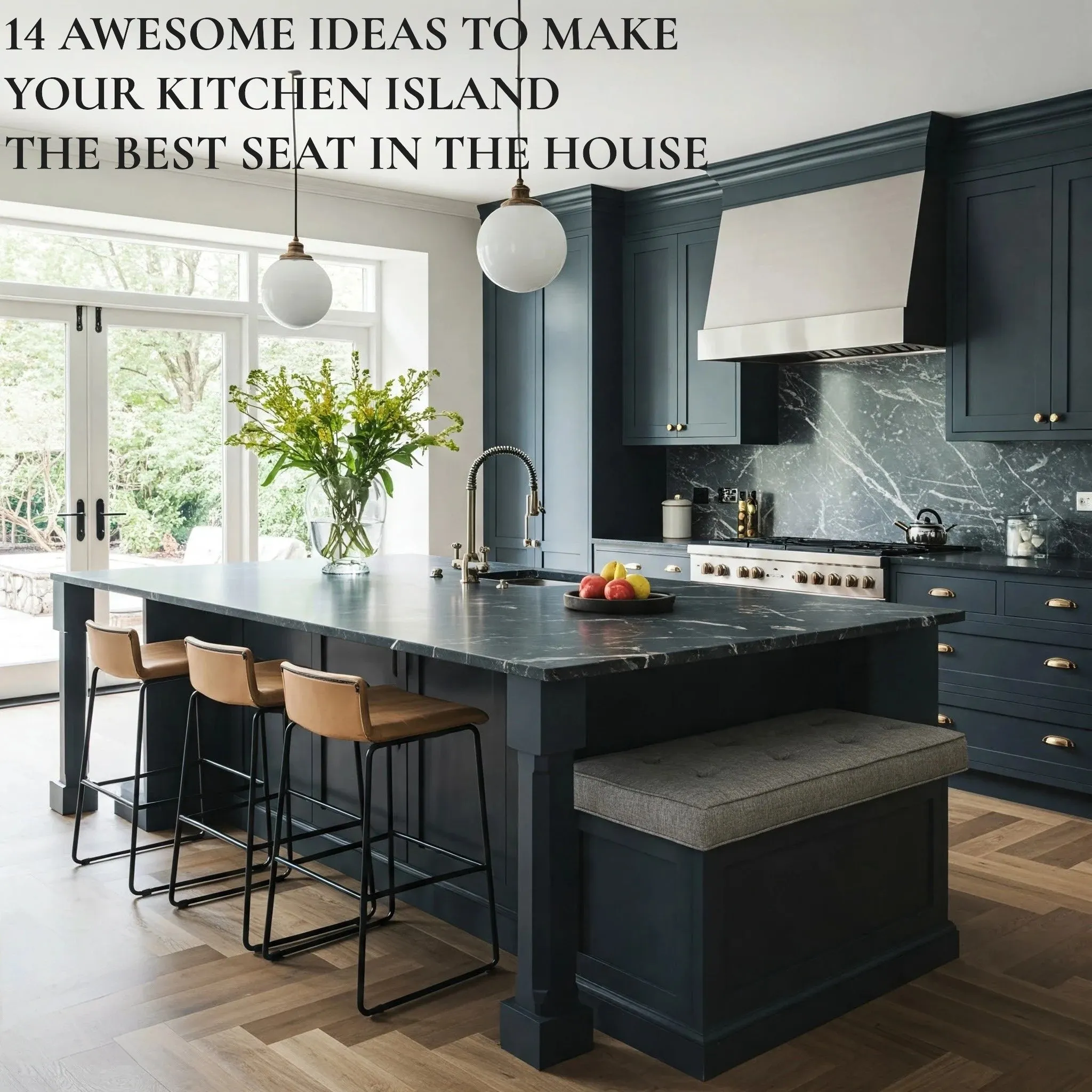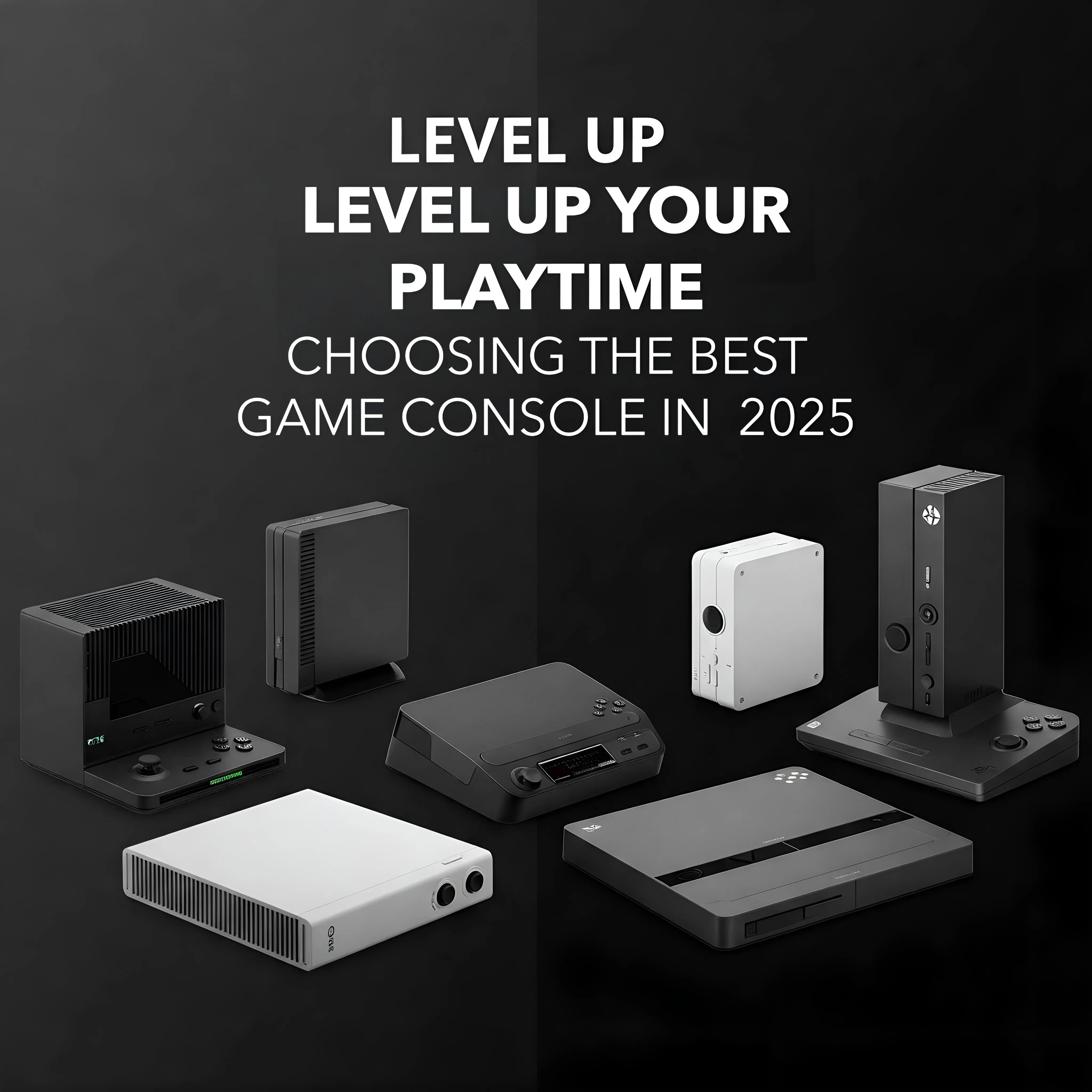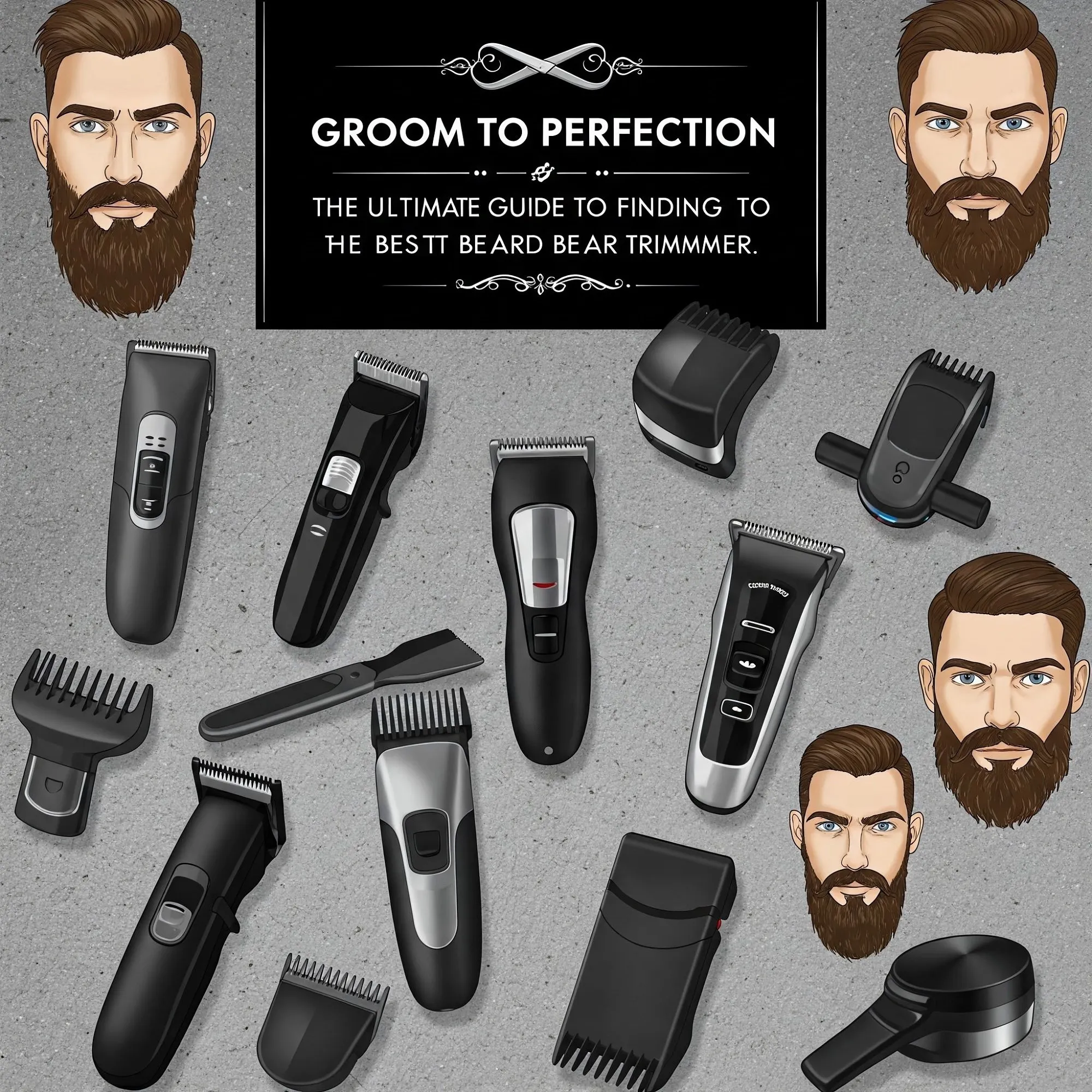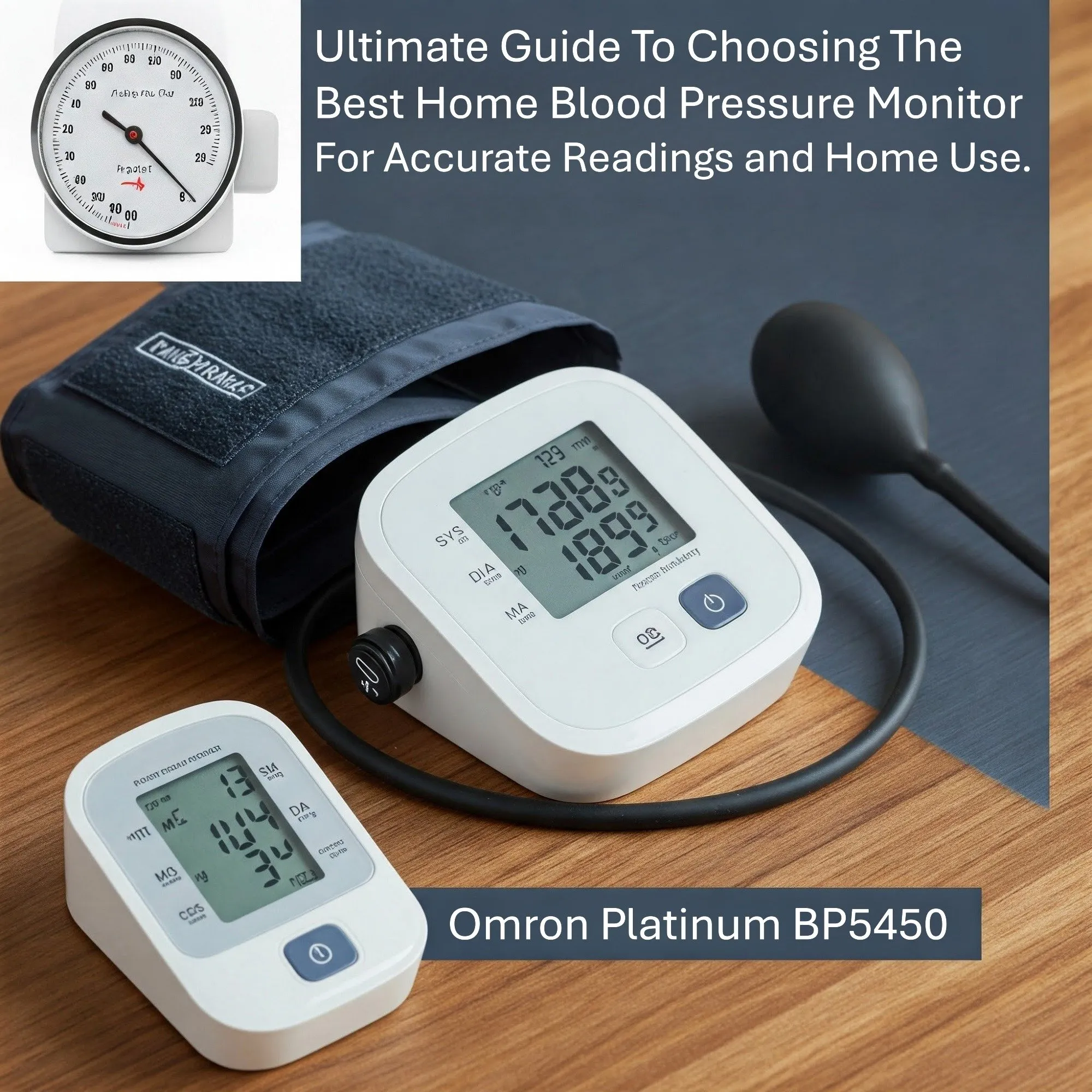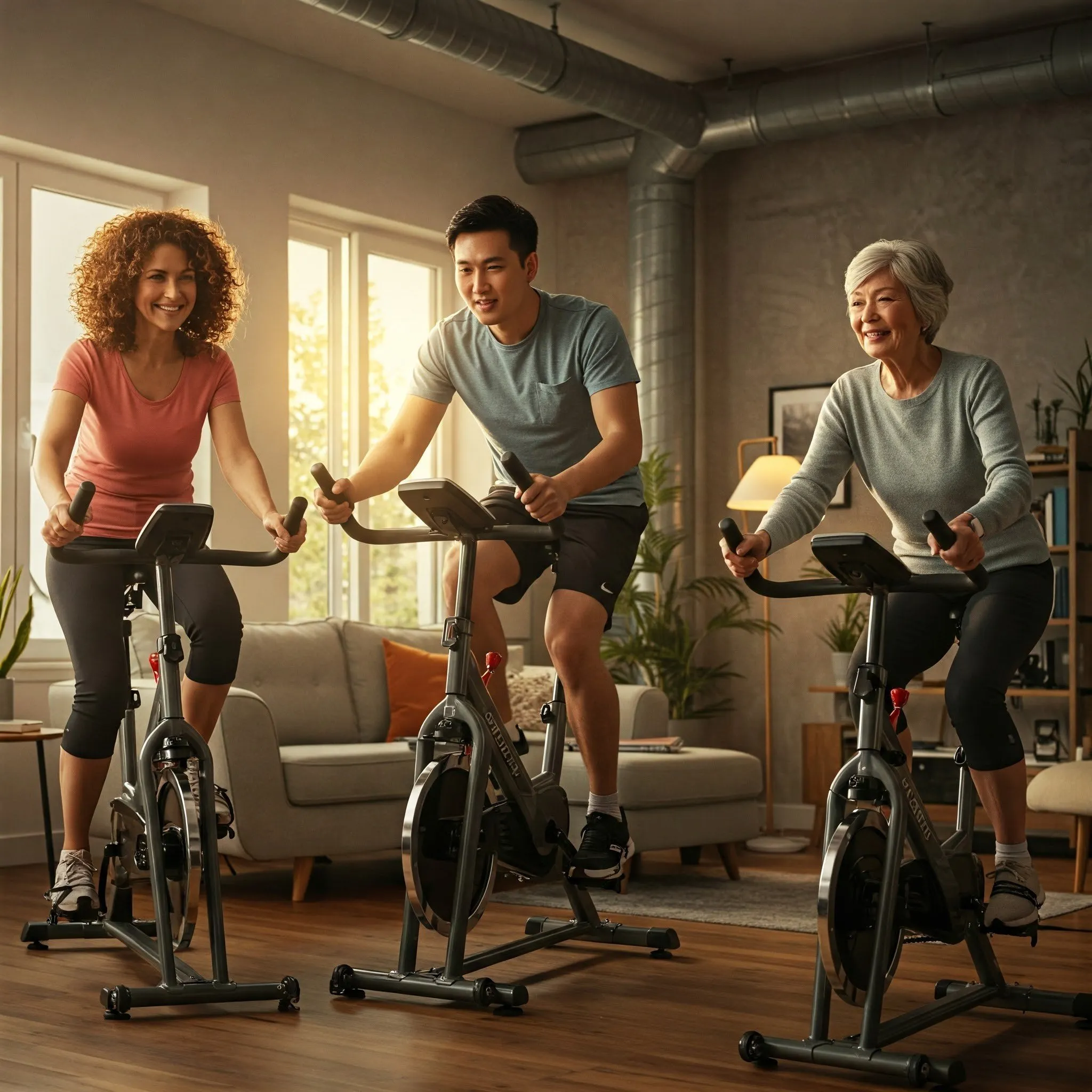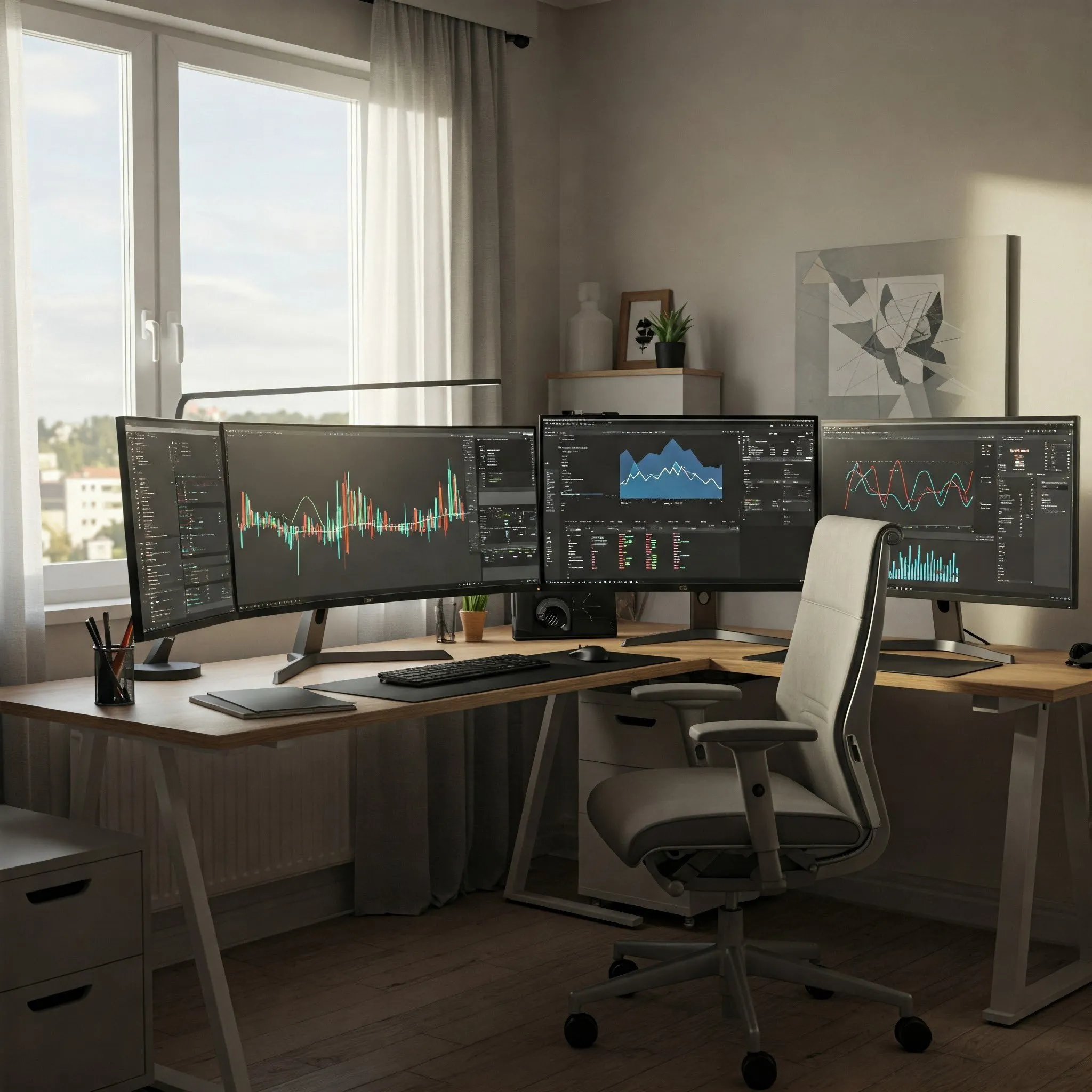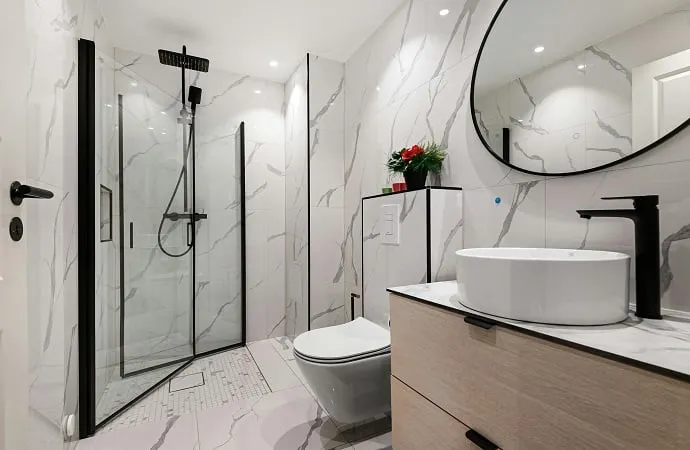Spinning Into Shape at Home: Your Guide to Finding the Best Exercise Bike
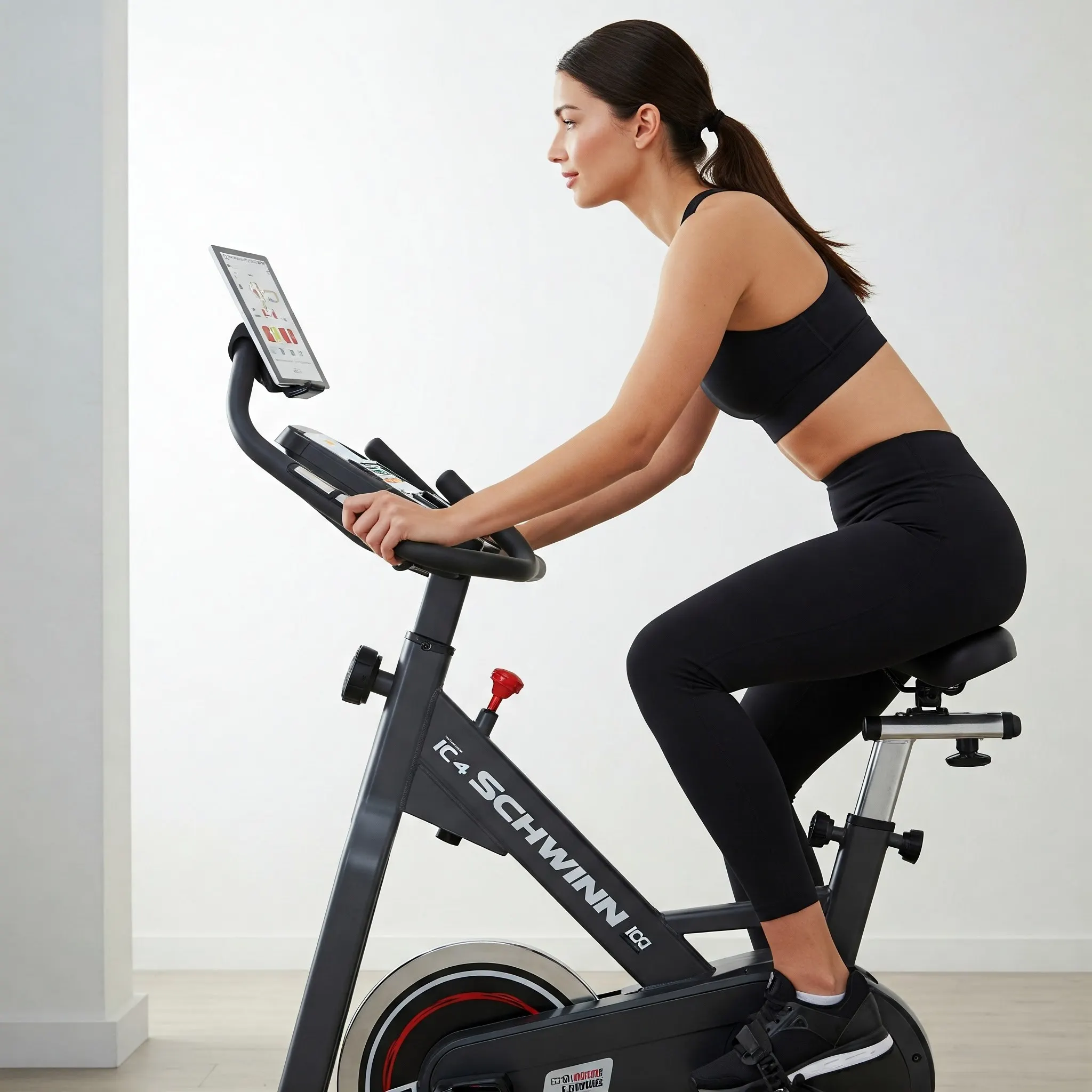
The Schwinn
"Please be advised that we may receive compensation from the products featured on this page, and we participate in affiliate programs. Learn More ›"
Fitness trends might come and go, but the enduring appeal of the exercise bike remains steadfast. For decades, this low-impact, high-reward workout has been a cornerstone of cardiovascular fitness. Whether you're a seasoned cyclist craving intense daily studio-style sessions or someone seeking a gentle, moderate pace a few times a week, the right exercise bike is your key to success.
Having rigorously tested countless indoor cycling bikes over the past four years, we've pinpointed five exceptional models designed to cater to a diverse range of riders and fitness goals. Our curated recommendations include a premium, connected cycling experience that rivals studio classes, budget-friendly magnetic resistance bikes for versatile training, streaming-ready friction resistance models for immersive app integration, and robust budget options that don't compromise on ride quality.
====================================================================
Who Can Benefit from an Exercise Bike? Your Path to Enhanced Cardio Fitness
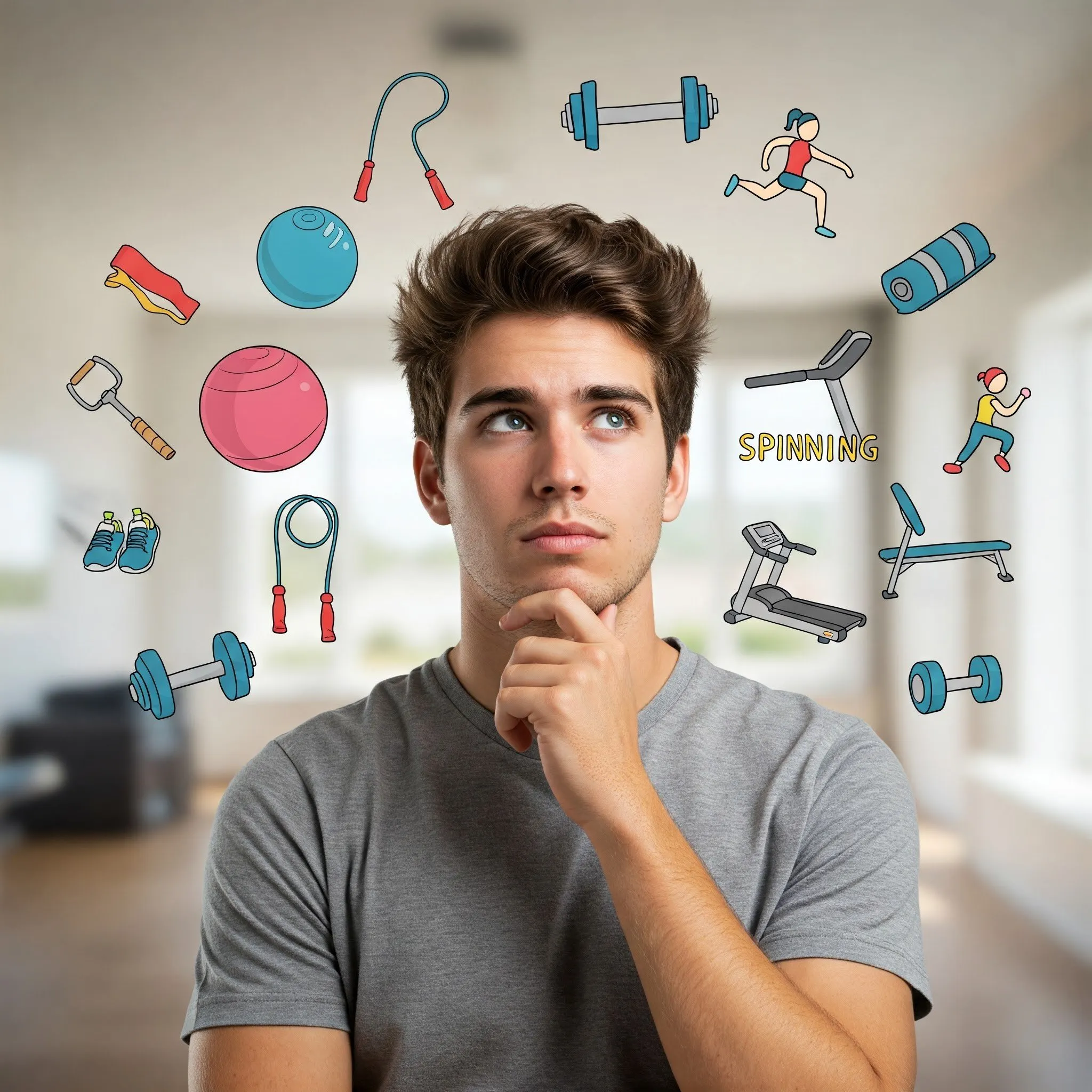
Different fitness options.
Are you looking to elevate your cardiovascular health or simply maintain your current fitness level? An exercise bike at home can be an invaluable tool. The U.S. Department of Health and Human Services emphasizes the importance of regular aerobic activity, recommending at least 150 minutes of moderate-intensity or 90 minutes of vigorous-intensity exercise per week for adults. An exercise bike provides a convenient and effective way to meet these guidelines without ever stepping outside your door.
Beyond just meeting basic fitness recommendations, incorporating an exercise bike into your routine opens up a world of possibilities. It can be your primary source of aerobic exercise, a versatile cross-training option to complement other activities, or even a gentle method for low-impact injury rehabilitation. However, it's crucial to consult with your healthcare provider before starting any rehabilitation program, ensuring it's tailored to your specific needs.
Our extensive testing of exercise bikes has led us to a vital insight: choosing the best bike is deeply personal. It's not about the flashiest features or the highest price tag, but about aligning the bike with your lifestyle, preferences, and fitness aspirations. To guide you in this crucial decision, consider these key questions:
- Home vs. Studio Cyclist: Do you thrive in the motivating energy of a studio class, or does the convenience and privacy of home workouts better suit your style? Reflect on where you truly feel motivated and energized to consistently workout.
- Gym Hiatus or Long-Term Home Fitness? If you’re temporarily taking a break from a gym or studio setting to workout at home, is this a short-term solution, or do you envision creating a long-term home fitness haven? This will influence your investment level and feature priorities.
- Cycling Shoes or Sneakers? Are you willing to invest in specialized cycling shoes for enhanced performance and clip-in efficiency, or do you prefer the flexibility of pedaling in your everyday sneakers? Consider the convenience and performance trade-offs.
- Built-in Screen or BYOD (Bring Your Own Device)? Do you value the immersive experience of a large, built-in touchscreen for guided workouts, or are you comfortable using your own tablet or TV to stream content? Think about your tech preferences and budget.
- Class Production Value: High-Gloss or Local Gym Vibe? When it comes to online classes, do you gravitate towards high-production, celebrity-instructor experiences, or do you prefer a more relaxed, community-focused local gym feel? This will guide your content subscription choices.
- Cycling-Centric or Cross-Workout Versatility? Do you envision cycling as your primary workout, or do you want the flexibility to integrate other types of workouts, such as strength training or yoga, alongside your cycling sessions? Consider bikes that offer features like included weights or swivel screens.
- Household Riders: Solo or Shared? Will you be the primary user, or will multiple members of your household be joining the ride? This impacts the importance of adjustability and bike durability.
- Workout Frequency: Realistically How Often? Be honest with yourself about how often you realistically plan to ride your bike. This helps justify the investment and feature set you need.

Thoughtful person sitting on the edge of an exercise bike.
====================================================================
The Rise of Connected Fitness: Studio Class Experience at Home
The modern exercise bike landscape is increasingly dominated by the "connected fitness" revolution. Many bikes now aim to replicate, or even surpass, the immersive experience of a live indoor cycling class, right in your home. The primary allure of these bikes is the seamless integration with fitness apps, allowing you to virtually join dynamic studio-style classes led by motivating instructors.
While the connected experience is a major draw, it's important to note that four out of our five top picks also offer the flexibility to ride "unconnected" for basic, self-guided cardio sessions. We also rigorously tested simpler bikes without built-in connectivity, providing a more streamlined approach to riding. Furthermore, we explored models that prioritize Bluetooth connectivity and responsive functionality over built-in screens and content. These bikes empower you to utilize your preferred indoor cycling apps, including popular platforms like Zwift (ideal for road-style cycling simulations) and Studio Sweat (offering more traditional indoor cycling classes).
While the Peloton app can also be used with these Bluetooth-enabled bikes, it's worth noting that you'll miss out on features beloved by Peloton devotees, such as live leaderboards and full real-time stats that are natively integrated into the Peloton Bike ecosystem.
For this guide, our primary focus is on stationary indoor cycling bikes. We've deliberately excluded upright exercise bikes (which mimic a traditional outdoor bike posture), recumbent exercise bikes (featuring a reclined position), and fan bikes (utilizing air resistance), as these categories represent distinct exercise modalities we may explore in future testing.
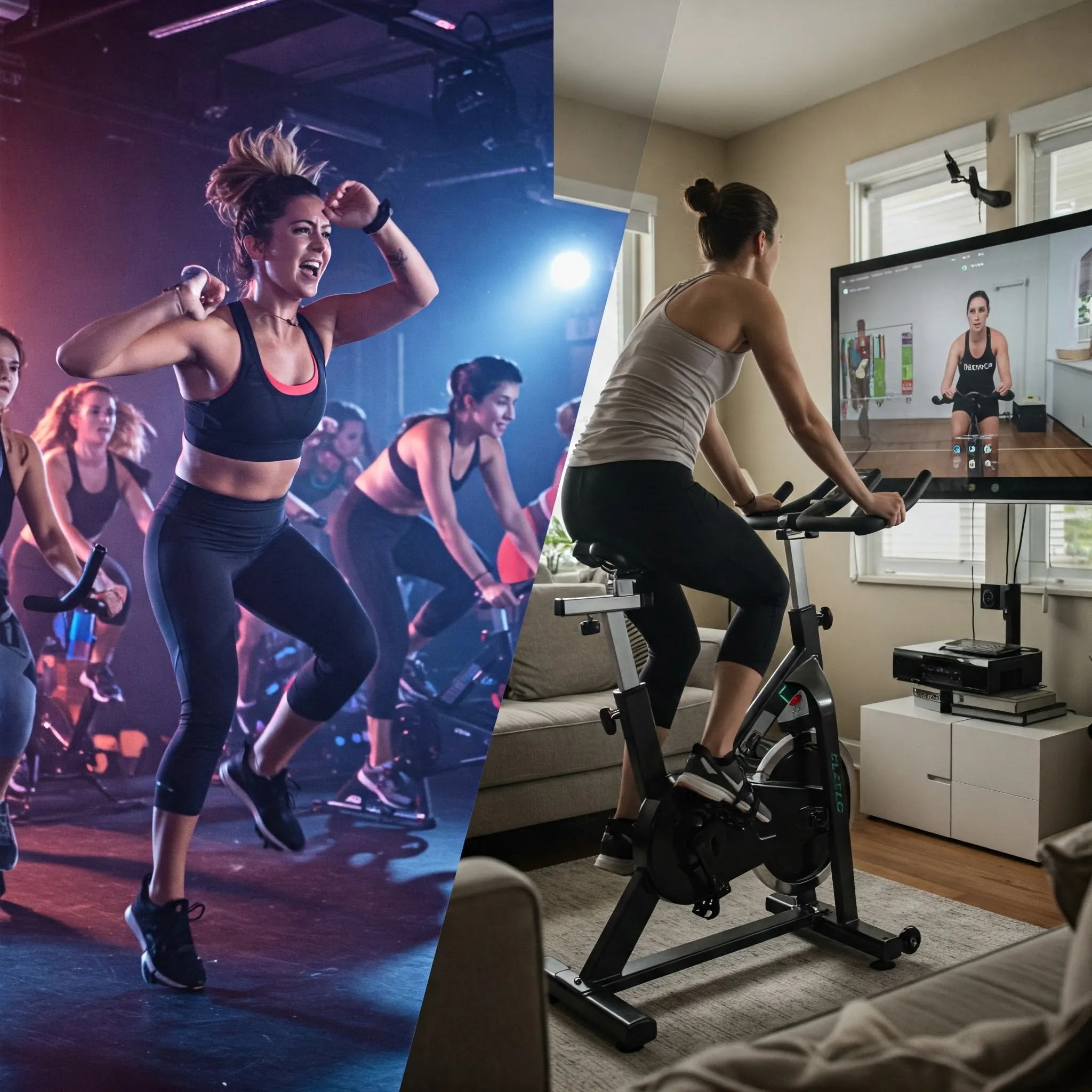
Bustling, energetic studio cycling class.
====================================================================
Top Exercise Bike Picks: Versatile, Premium, Streaming-Ready, and Budget-Conscious Options
Let's dive into our top exercise bike recommendations, categorized to help you find the perfect fit for your specific needs and priorities:
Versatile and Reliable: The Schwinn IC4 and Bowflex C6
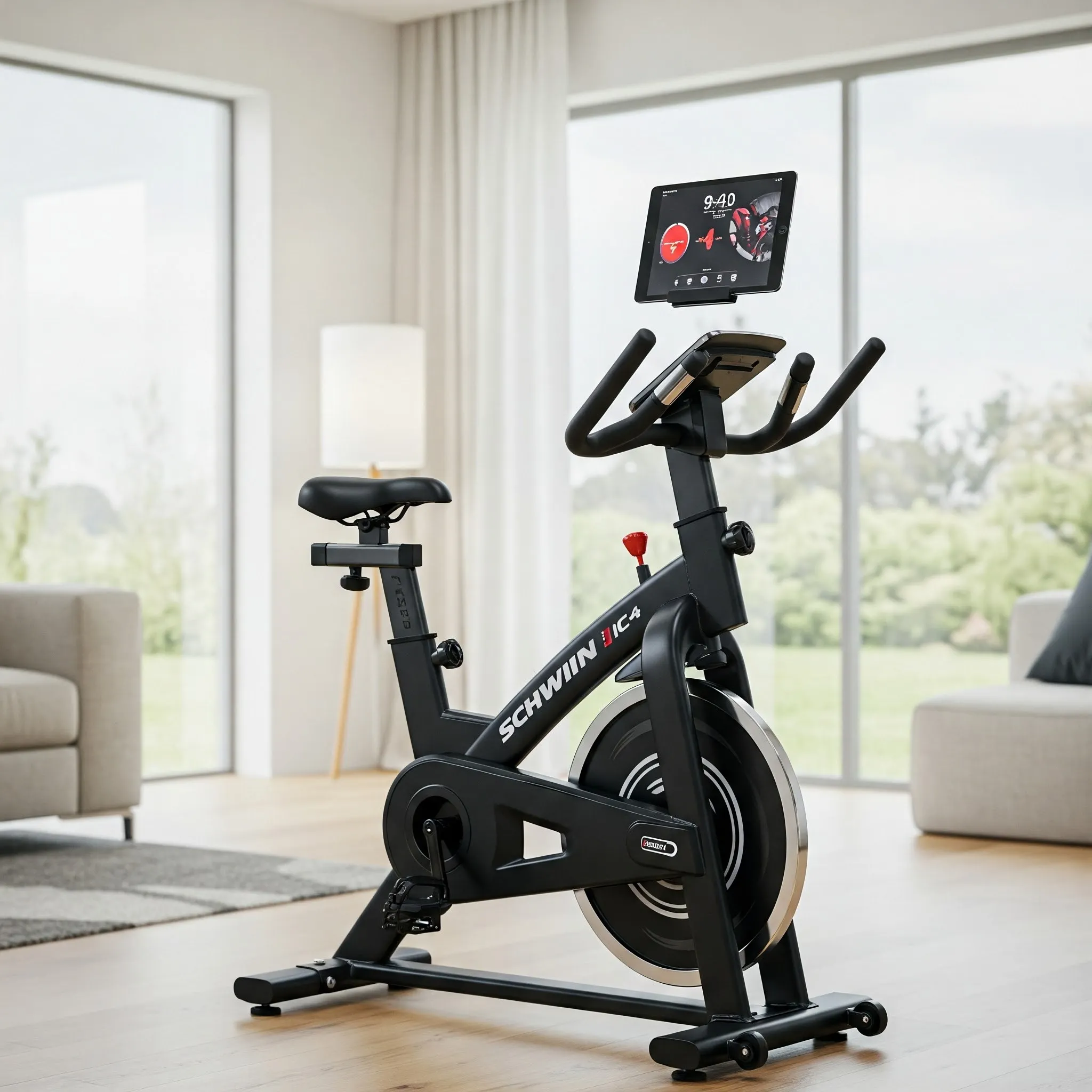
Schwinn IC4, with the LCD console.
Best For: Riders seeking a bike that delivers comprehensive real-time metrics, regardless of app connectivity, in a user-friendly package.
The Schwinn IC4 features an LCD console displaying a full suite of metrics, coupled with Bluetooth connectivity for seamless integration with multiple cycling apps and heart-rate monitors. This bike prioritizes adaptability, functionality, and a smooth ride. The Schwinn IC4 and Bowflex C6 are identical, both under the Nautilus umbrella, offering the same robust warranties and optional extended protection plans.
Key Features:
- Adjustable handlebars and seat for optimal fit.
- LCD console displaying cadence, time, calories, speed, distance, resistance level, and heart rate.
- Bluetooth connectivity for various cycling apps, including Peloton, Zwift, and Rouvy.
- Included heart-rate armband and compatibility with GPS running watches.
- Smooth magnetic resistance with 100 levels.
- Dual-sided pedals for cycling shoes (SPD clips) or sneakers (toe cages).
- Included 3-pound dumbbells for additional workouts.
- High maximum weight capacity (330 pounds) and broad height range (4'6" to 6'6").
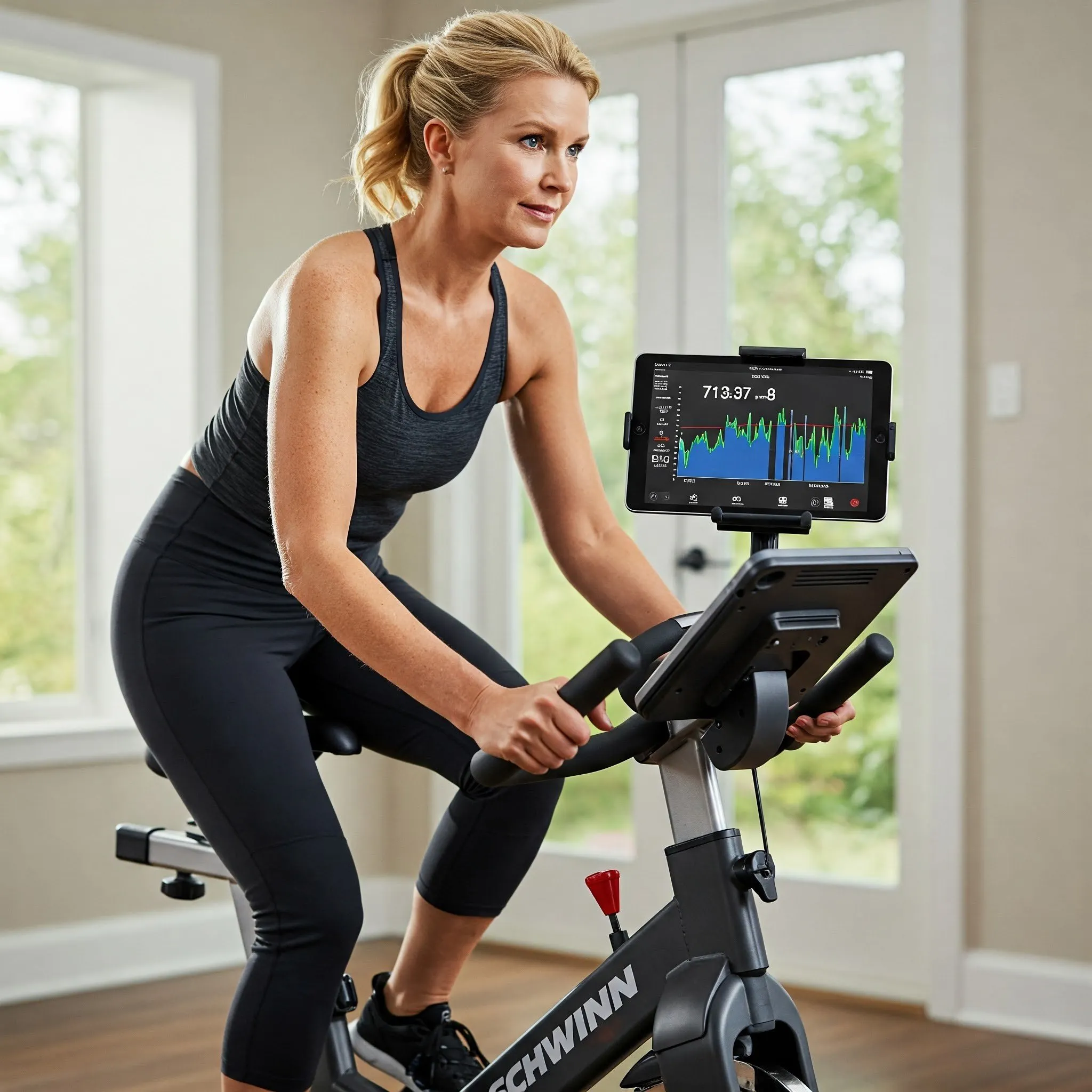
Person smoothly riding the Schwinn IC4.
====================================================================
A Premium Connected Experience: The Peloton Bike
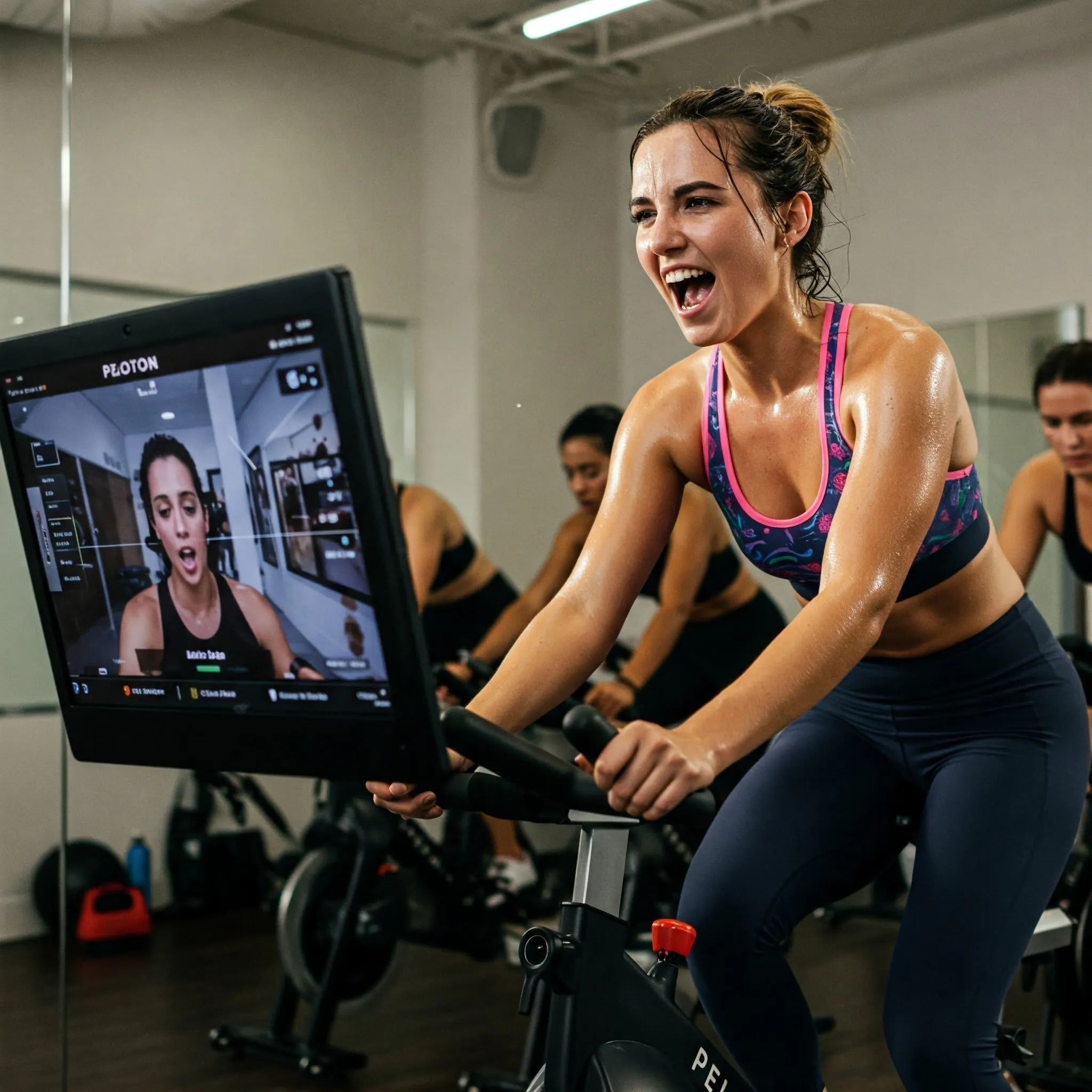
Person energetically participating in a Peloton class.
Best For: Those seeking a fully immersive, interactive studio-cycling experience with high-caliber content.
The Peloton Bike is synonymous with the connected-fitness revolution, offering a comprehensive studio-like experience at home. A subscription ($44/month) is essential for accessing its full functionality.
Key Features:
- Smooth electromagnetic resistance and a comfortable, adjustable saddle.
- Grippy, secure handlebars and Look Delta–compatible pedal clips.
- 21.5-inch sweat-proof touchscreen for streaming Peloton's branded classes.
- Real-time metrics, including ride time, speed, distance, cadence, resistance, calories, and wattage.
- Extensive library of on-demand cycling classes, scenic rides, and live sessions.
- Ability to connect Apple Watch or Wear OS watch.
====================================================================
Well-Built and Streaming-Ready: The Spinning Aero Connected Spinner Bike
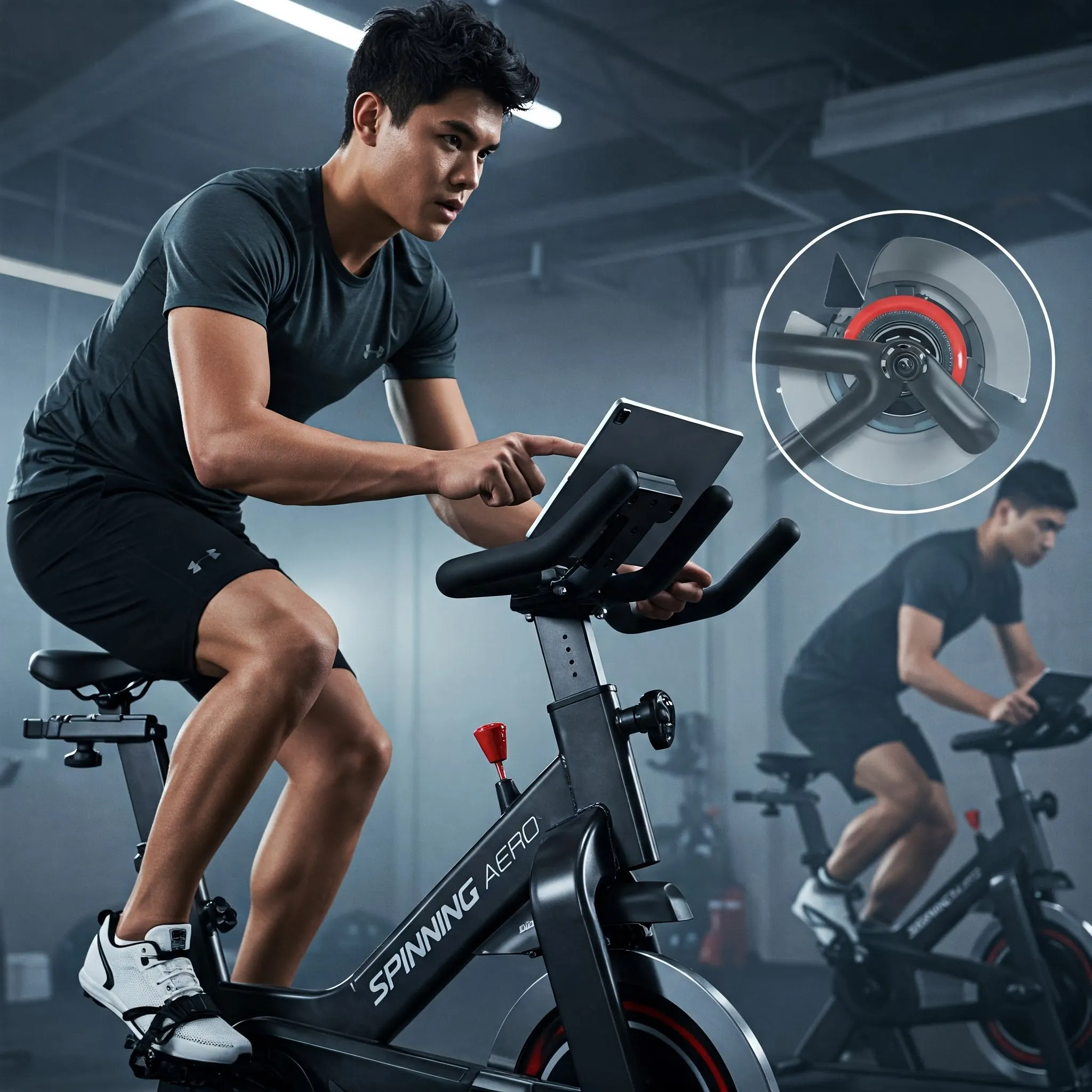
Person using a tablet to follow a cycling class on the Spinning Aero Connected Spinner Bike.
Best For: Riders who want a durable bike compatible with streamed workouts from personal devices, without needing a power source.
The Spinning Aero Connected Spinner Bike features a cadence sensor for Bluetooth connectivity with various apps. Its friction resistance and robust build provide a unique riding experience.
Key Features:
- Cadence sensor for Bluetooth connectivity with apps like Spinning Digital and Peloton App+.
- Friction resistance for a more traditional cycling feel.
- Durable construction with an open feel between the handlebars and seat.
- Wide, comfortable handlebars and a racing-style seat.
- Sturdy water-bottle holders and a solid device holder.
- No need to plug into an outlet.
====================================================================
Budget-Friendly and Solid: The Sunny Health & Fitness SF-B1805

Person comfortably riding the Sunny Health & Fitness SF-B1805.
Best For: Riders seeking a sturdy, affordable bike without the need for advanced metrics or connectivity.
The Sunny Health & Fitness SF-B1805 offers a reliable, no-frills riding experience. Its robust construction and comfortable design make it a standout budget option.
Key Features:
- Sturdy construction with a stable, solid feel.
- Comfortable, generously padded seat.
- Adjustable magnetic resistance with smooth transitions.
- Accommodates riders with inseams between 28 and 38 inches.
- Flat surface on handlebars for a tablet or device.
- No need to plug into an outlet.
====================================================================
How Our Picks Compare: A Quick Overview

====================================================================
Why Trust Our Recommendations?
Our recommendations are based on extensive research, expert consultations, and hands-on testing. We've consulted with fitness professionals, analyzed industry reports, and spent countless hours riding various exercise bikes to provide you with reliable and accurate information.
====================================================================
Our Testing Methodology
Over four years, we've tested numerous indoor-cycling bikes, evaluating them based on:
- Overall Build: Stability, sturdiness, and leveling.
- Drive Type: Belt drives for quiet and smooth operation.
- Pedals: Comfort and compatibility with cycling shoes.
- Fit and Adjustability: Range of adjustments and ease of use.
- Handlebars: Comfort, grip, and configuration.
- Seat Comfort: Style, cushioning, and adjustability.
- Ride Experience: Flywheel weight, pedal stroke, and resistance.
- Noise: Quiet operation and minimal distractions.
- Console/Screen: Functionality and information display.
- Connectivity: App compatibility and Bluetooth features.
- Accessories: Water-bottle and device holders.

Reviewing exercise bike testing data and discussing features.
====================================================================
Proper Bike Fit: Optimizing Your Ride
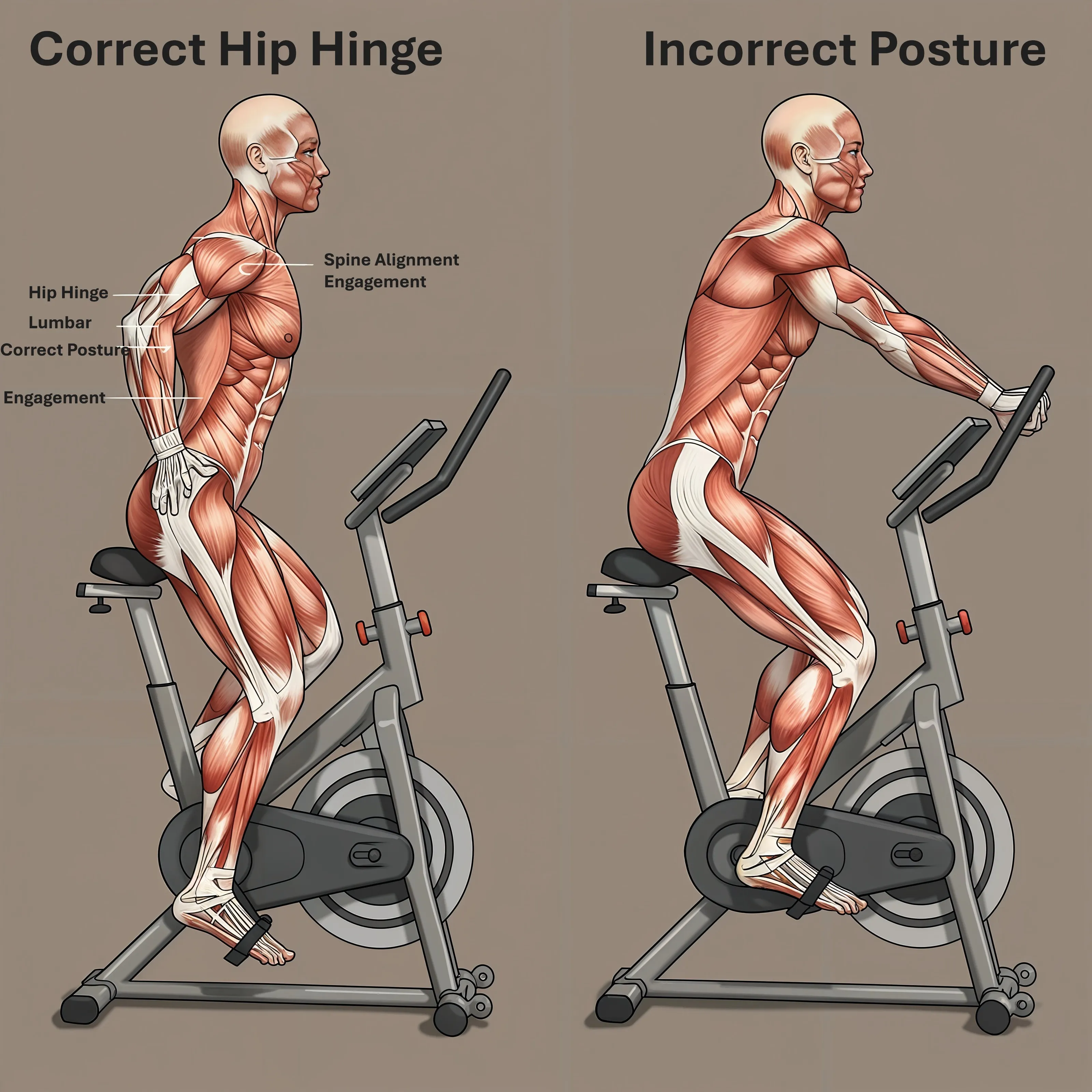
The correct "hip hinge" posture on an exercise bike.
"Most people sit on a bike saddle like they sit on a bar stool. Don’t." – This expert advice highlights a fundamental misunderstanding of proper cycling posture. Incorrect bike fit not only stresses your spine but also underutilizes your hips and overworks your knees, hindering performance and increasing injury risk.
Effective indoor cycling relies on a "hip hinge" posture. This technique involves pushing your hips back and engaging them properly during each pedal stroke. This not only protects your back but also optimizes your power output and efficiency. Understanding and implementing proper bike fit is the cornerstone of a comfortable and effective indoor cycling experience.
====================================================================
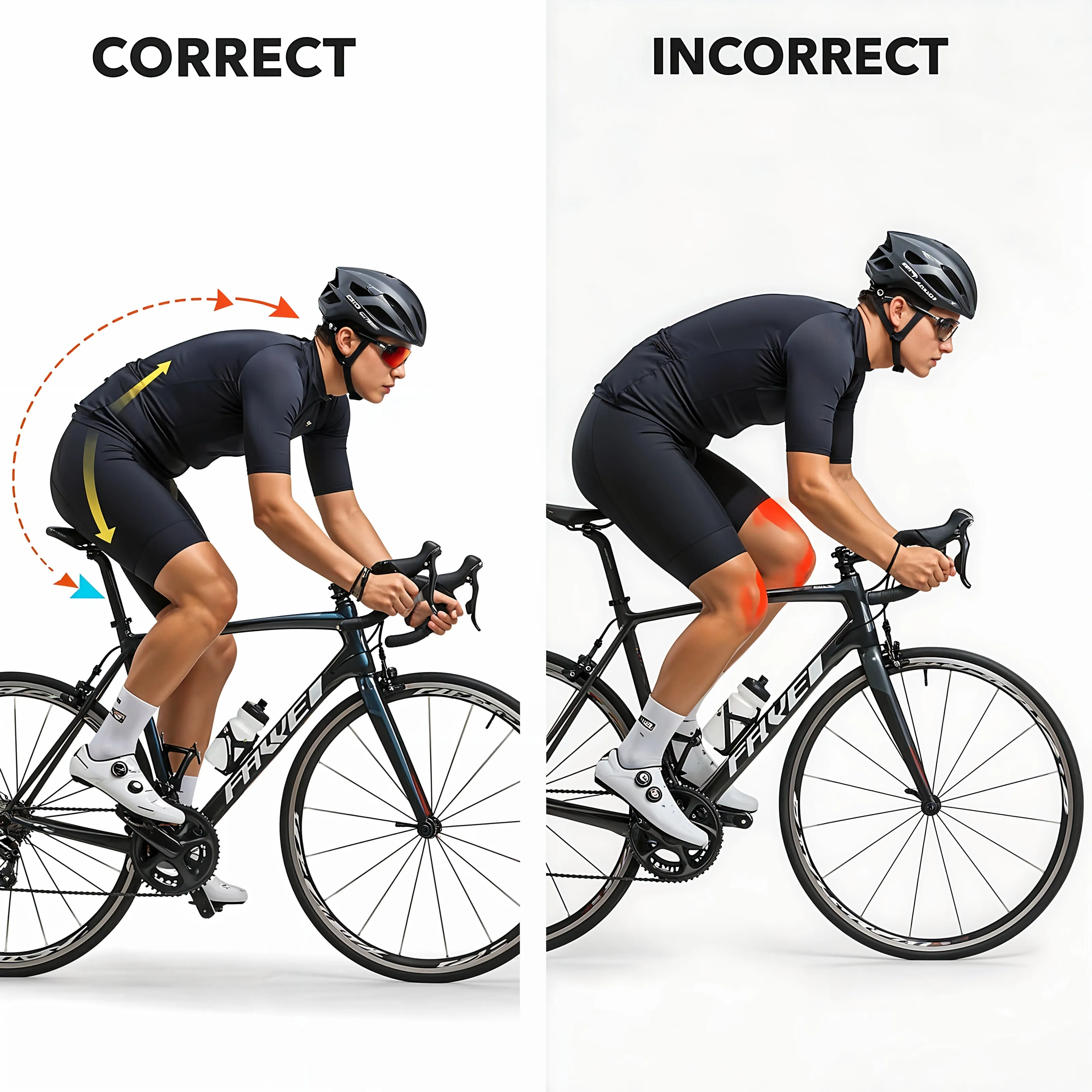
correct and incorrect bike fit
To achieve this crucial hip hinge, proper bike adjustment is paramount. A well-fitted exercise bike transforms your workout from a potential source of discomfort and inefficiency into a powerful tool for fitness. Conversely, an improperly adjusted bike can lead to pain, injury, and diminished workout effectiveness. Let's delve into the essential adjustments you need to make to achieve your optimal riding position.
====================================================================
Fine-Tuning Your Ride: Mastering Exercise Bike Adjustments for Peak Performance and Comfort
Achieving the ideal bike fit is a process of fine-tuning several key areas. While specific adjustment mechanisms may vary slightly between bike models, the fundamental principles remain consistent. Focus on these core adjustment points to dial in your perfect riding position:
1. Seat Height: Finding Your Pedal Power Sweet Spot

Series of three images illustrating seat height adjustment
Optimal seat height is crucial for efficient pedaling and minimizing knee strain. Too low, and you'll overwork your knees and lose power. Too high, and you'll rock excessively on the saddle, potentially causing discomfort and instability. Here's how to find your sweet spot:
- The Heel Method: While seated on the bike, extend one leg to the bottom of the pedal stroke (6 o'clock position). Place your heel on the pedal. Your leg should be almost fully extended at this point, with a very slight bend in your knee.
- The Knee Bend Check: Once you've established the approximate height using the heel method, clip in (if using cycling shoes) or place your foot properly on the pedal. Pedal backward. At the bottom of the pedal stroke, you should have a slight bend in your knee – around 25-35 degrees. This subtle bend prevents knee hyperextension and allows for efficient power transfer.
- Hip Rock Assessment: As you pedal, observe your hips. If you notice excessive rocking from side to side to reach the bottom of the pedal stroke, your seat is likely too high. Lower it slightly until the rocking subsides.
- Fine-Tune in Motion: After initial adjustments, ride for a few minutes. Pay attention to your knees – are they feeling strained or overly bent? Adjust the seat height incrementally until you find a position that feels powerful, comfortable, and sustainable for longer rides.
====================================================================
2. Seat Fore/Aft Position: Balancing Weight Distribution and Knee Alignment
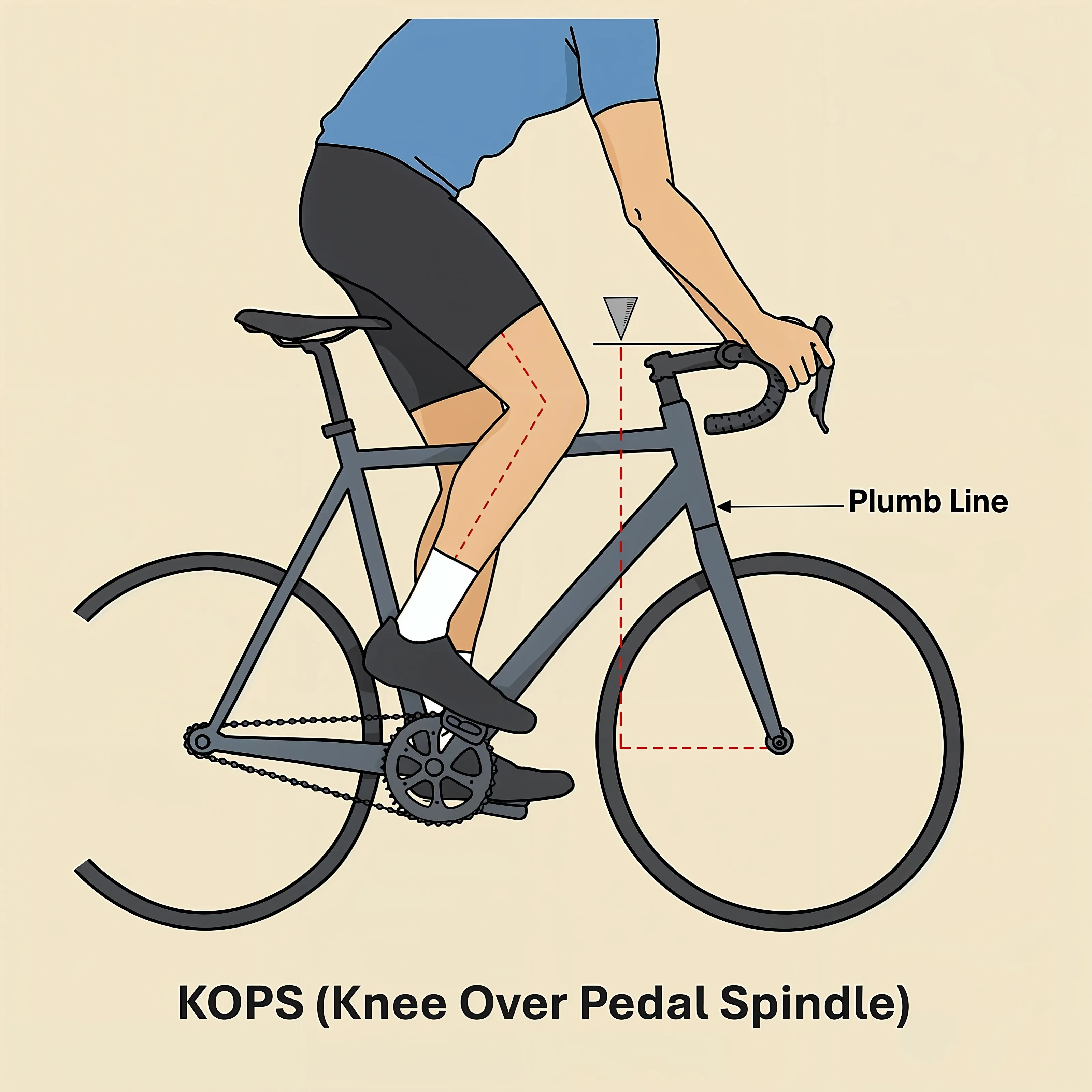
KOPS (Knee Over Pedal Spindle)
The fore/aft (horizontal) position of your seat impacts weight distribution and knee alignment over the pedals. Proper fore/aft positioning contributes to both comfort and pedaling efficiency.
- Knee Over Pedal Spindle (KOPS): This is a common guideline. With your feet at the 3 o'clock and 9 o'clock positions (pedals horizontal), position the forward knee so that a plumb line dropped from the front of your kneecap falls directly over the spindle (center) of the pedal.
- Weight Balance Check: While pedaling, feel your weight distribution. You should feel balanced and centered over the bike. If you feel too much pressure on your hands or groin, adjust the seat fore or aft to redistribute your weight more evenly.
- Handlebar Reach Consideration: Seat fore/aft position is often adjusted in conjunction with handlebar reach. If you feel too stretched out or cramped, adjusting the seat horizontally, along with handlebar adjustments, can help fine-tune your overall riding posture.
- Listen to Your Body: Ultimately, comfort is key. Experiment with small adjustments to find a fore/aft position that feels balanced and minimizes pressure points.
====================================================================
3. Handlebar Height and Reach: Optimizing Comfort and Riding Style
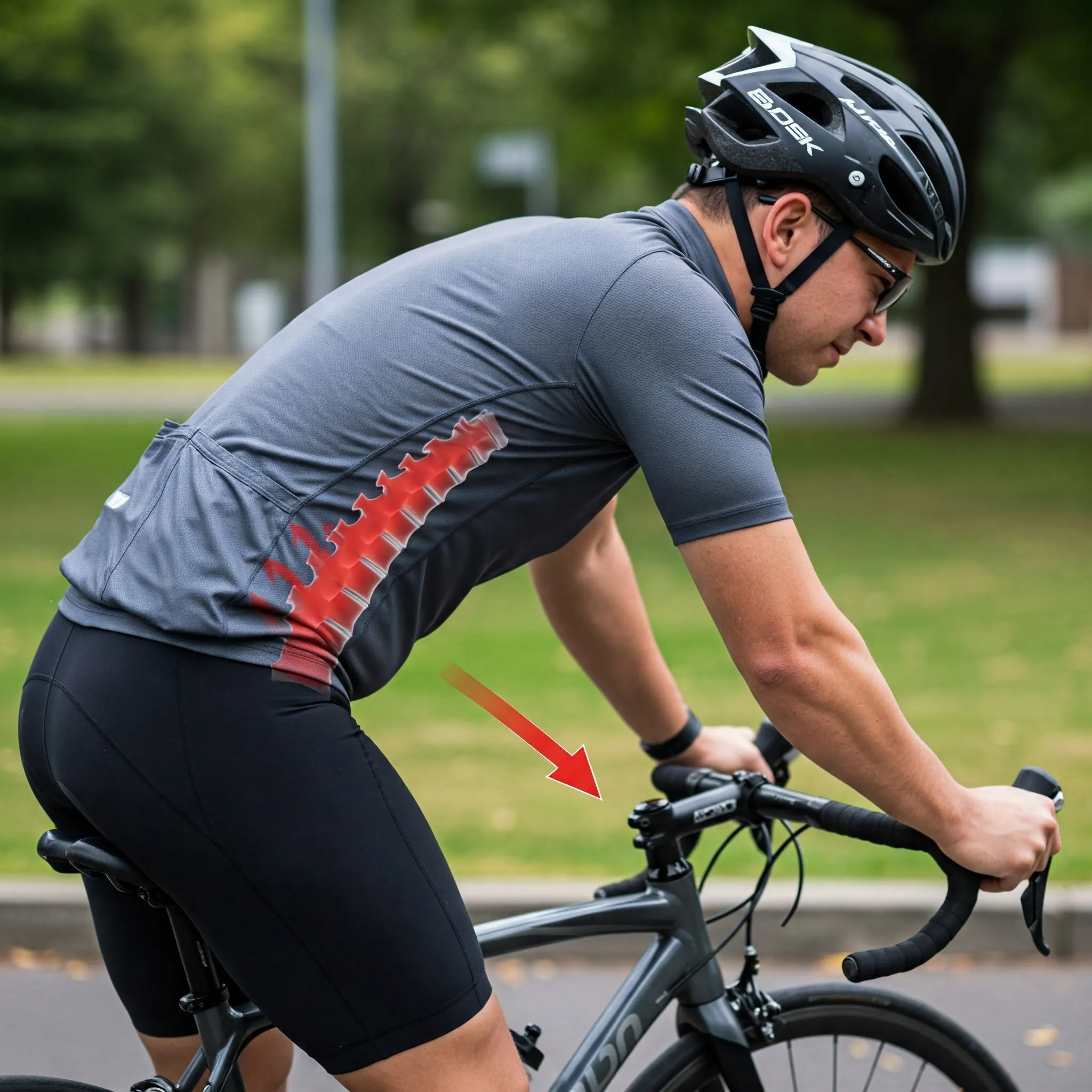
Handlebars too low (excessive strain on back)
Handlebar position significantly impacts your riding posture, comfort, and aerodynamics (though less critical for indoor cycling, comfort remains paramount).
- Handlebar Height - Beginner vs. Advanced: Generally, beginners often prefer handlebars positioned slightly higher than the seat, promoting a more upright and comfortable posture, reducing strain on the lower back and hamstrings. More experienced riders may prefer handlebars level with or slightly below the seat for a more aggressive, performance-oriented position (though less relevant for typical indoor cycling comfort).
- Handlebar Reach - Avoiding Overextension or Cramping: Handlebar reach refers to the horizontal distance between your seat and handlebars. A proper reach allows for a slight bend in your elbows when your hands are on the handlebars, preventing overextension and shoulder strain. If you feel excessively stretched out or cramped, adjust handlebar fore/aft position (if available on your bike model) and consider making slight adjustments to seat fore/aft position in conjunction.
- Experiment with Positions: Indoor cycling bikes often offer multiple hand positions on the handlebars. Experiment with different hand positions during your ride to find what feels most comfortable and allows you to engage different muscle groups. Upright positions are generally more comfortable for endurance riding, while lower, more forward positions may be used during higher-intensity intervals.
- Listen to Your Back and Shoulders: Pay attention to your back and shoulders during rides. If you experience pain or excessive strain, adjust handlebar height and reach to create a more comfortable and sustainable posture.
====================================================================
4. Handlebar Fore/Aft Adjustment (If Available): Fine-Tuning Reach
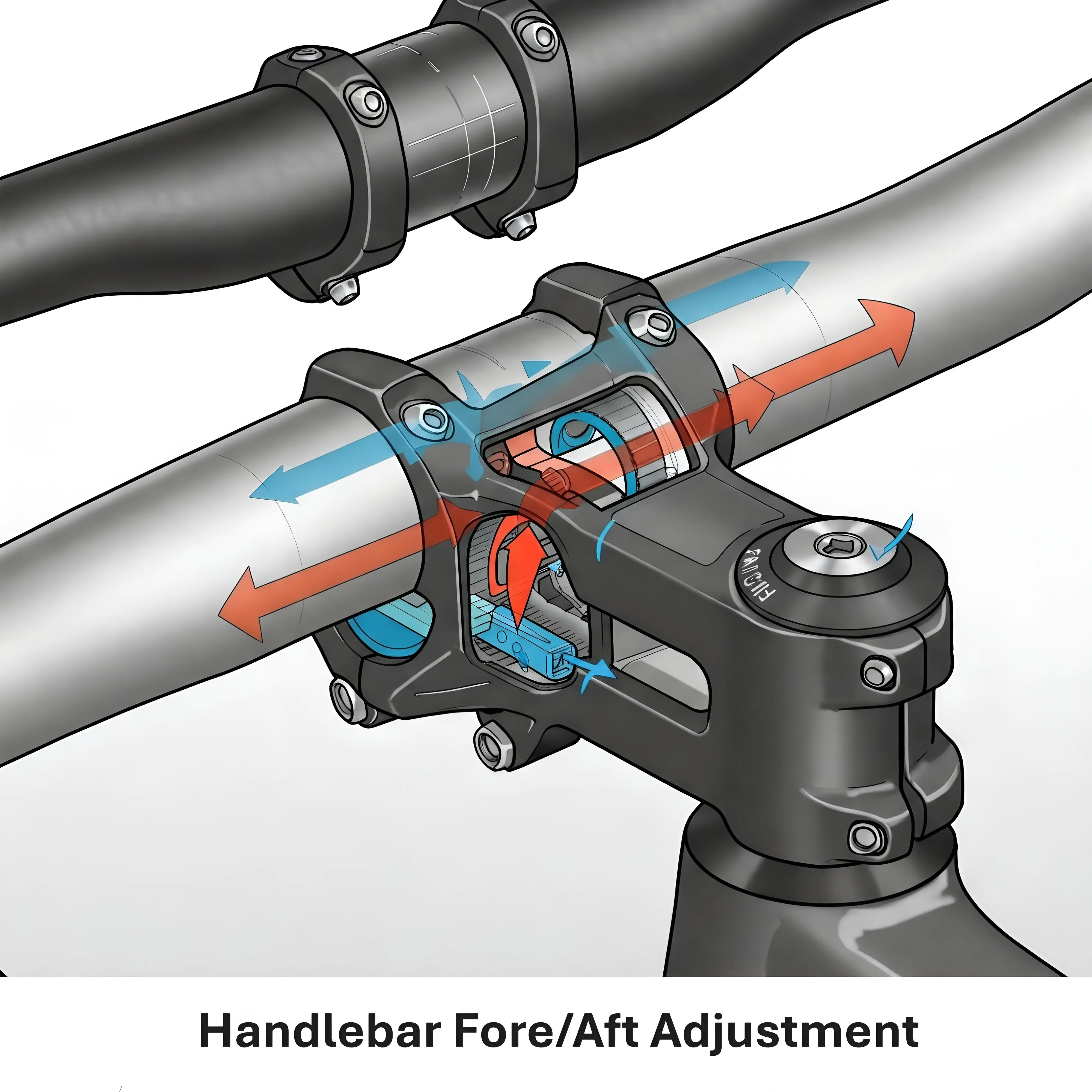
Some exercise bike models, like the Schwinn IC4 and Bowflex C6, offer handlebar fore/aft adjustment in addition to vertical height adjustment. This extra level of adjustability allows for even more precise customization of your riding position. Use this adjustment in conjunction with seat fore/aft adjustments to fine-tune your reach to the handlebars and achieve optimal upper body comfort.
5. Utilize Adjustment Markings (If Present): Record Your Perfect Settings

Close-up shot of adjustment markings
Many higher-quality exercise bikes include markings (numbers or tick marks) on seat posts and handlebar posts. Once you’ve found your ideal fit, take note of these settings! This makes it incredibly easy to replicate your perfect position after someone else uses the bike or if you inadvertently adjust it.
====================================================================
Essential Care and Maintenance Tips

Wiping down the bike after a workout.
To keep your exercise bike in top condition, follow these maintenance tips:
- Wipe Down After Each Use: Use a clean, damp cloth to remove sweat and dust from the bike's frame and components.
- Check and Tighten Bolts: Regularly inspect the bike for loose bolts and screws, and tighten them as needed.
- Lubricate Moving Parts: Apply a silicone-based lubricant to the pedals, seat post, and other moving parts to ensure smooth operation.
- Clean the Flywheel: Wipe down the flywheel to remove dust and debris.
- Inspect Pedals and Straps: Check the pedals and straps for wear and tear, and replace them if necessary.
- Store in a Dry Place: Keep the bike in a dry, well-ventilated area to prevent rust and corrosion.
- Use a Bike Mat: Place a bike mat underneath the bike to protect your floors and reduce noise.
Regular cleaning and maintenance will prolong the life of your exercise bike. Wipe down the bike after each use, check for loose parts, and lubricate moving components as needed.
By considering your needs and preferences, you can find the perfect exercise bike to achieve your fitness goals.
====================================================================
Other Notable Indoor Cycling Bikes
While our top picks stand out for their exceptional performance and value, several other indoor cycling bikes deserve mention. These alternatives cater to niche preferences and offer unique features that might align with specific rider requirements.
NordicTrack Commercial S22i Studio Cycle:
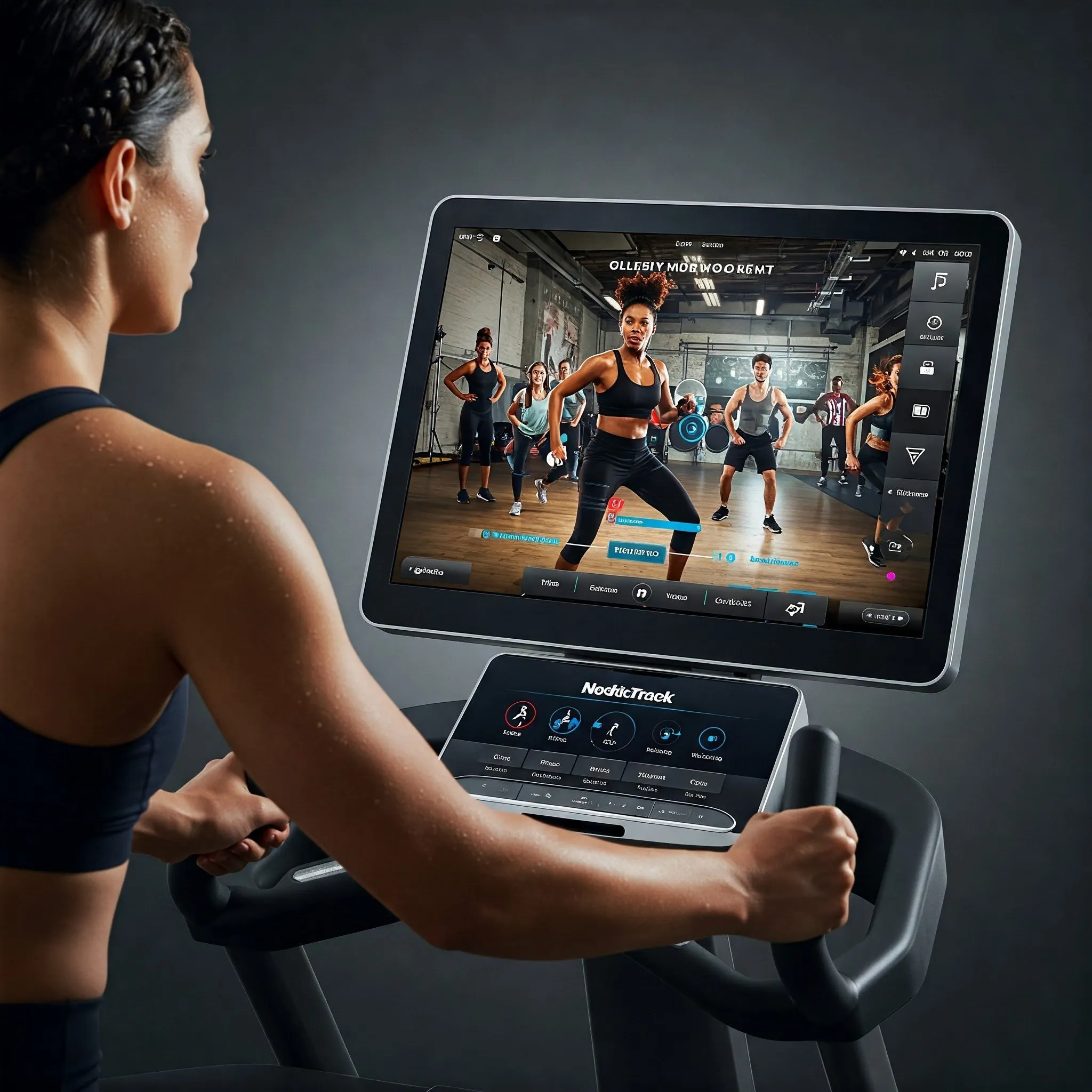
Person using the NordicTrack Commercial S22i.
This bike is a strong contender for those seeking an immersive, interactive experience similar to Peloton. It boasts a large 22-inch HD touchscreen, iFit integration for trainer-led workouts, and incline/decline capabilities for simulating outdoor terrain. However, it comes with a higher price tag and requires an iFit subscription.
=====================================================================
Echelon Connect Bike EX-5s:
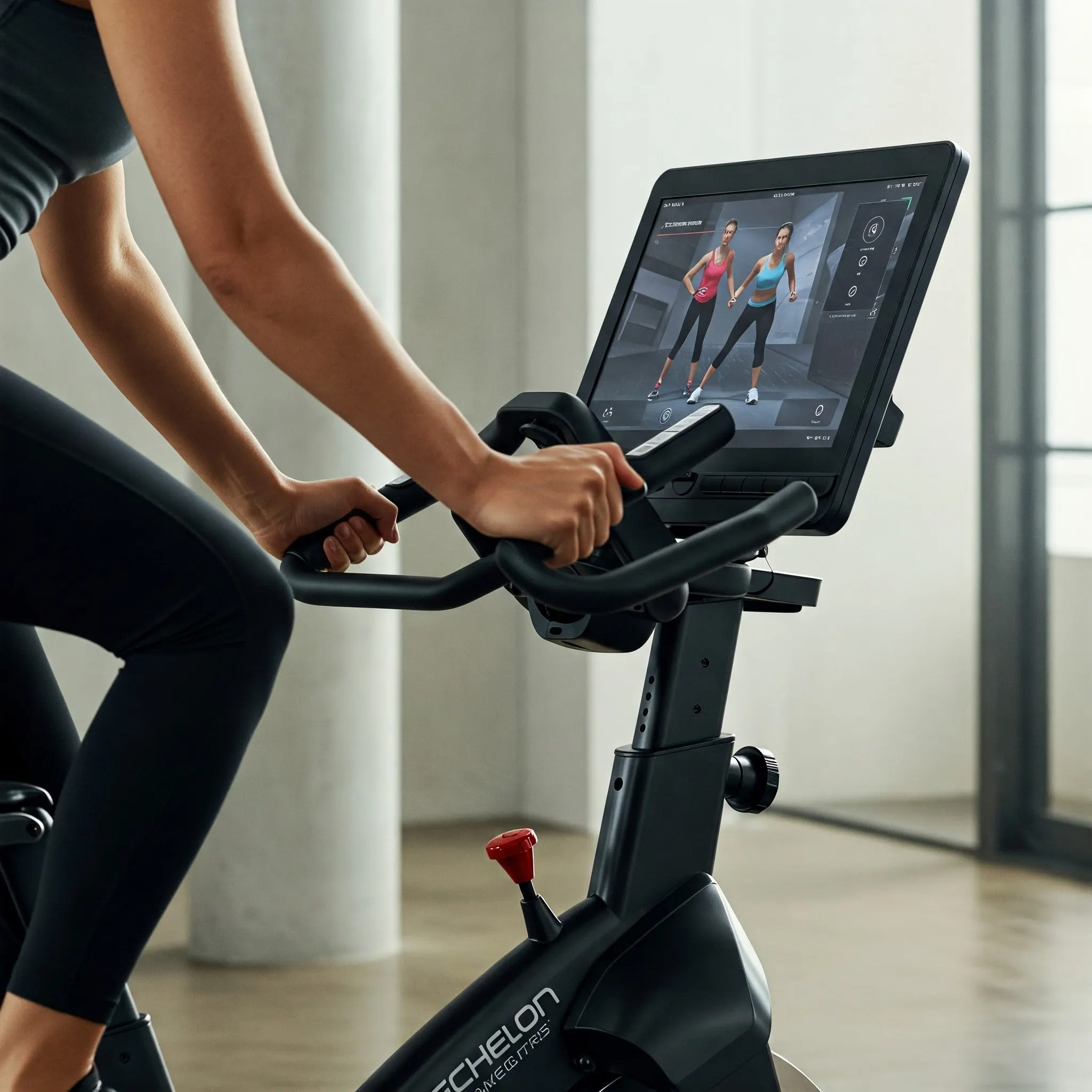
Person using the Echelon Connect Bike EX-5s.
Echelon offers a range of connected bikes, with the EX-5s being a popular choice. It features a rotating HD touchscreen, live and on-demand classes, and compatibility with various fitness apps. It's a more budget-friendly alternative to Peloton, but the app subscription is separate.
====================================================================
RENPHO AI Smart Bike:

Person using the RENPHO AI Smart Bike
This bike utilizes artificial intelligence to personalize your workouts and provide real-time feedback. It connects to the RENPHO AI Gym app, offering a variety of classes and scenic rides. It's a good option for those who appreciate data-driven training and personalized fitness plans.
====================================================================
YOSUDA Indoor Cycling Bike Stationary:

For those on a tight budget, the YOSUDA bike offers a basic but functional indoor cycling experience. It's a friction-resistance bike with an adjustable seat and handlebars. While it lacks advanced features and connectivity, it provides a solid workout for casual riders.
=====================================================================
The Competition: Understanding the Market
During our extensive testing, we encountered several bikes that didn't quite meet our standards. Some models suffered from build quality issues, such as wobbly handlebars or unstable frames. Others lacked the necessary adjustability or connectivity features. We also found that some budget options compromised on essential features, resulting in a less-than-satisfactory riding experience.
Key Competitors and Trends:
- Connected Fitness: The integration of live and on-demand classes, virtual reality experiences, and personalized training programs is a major trend.
- App Compatibility: Many bikes now offer seamless integration with popular fitness apps, allowing riders to choose their preferred content.
- AI and Data-Driven Training: Artificial intelligence and data analytics are being used to personalize workouts and provide real-time feedback.
- Budget-Friendly Options: As the market expands, more affordable options are becoming available, making indoor cycling accessible to a wider audience.
- Quiet and Smooth Operation: Magnetic resistance and belt drives are becoming standard, providing a quieter and more enjoyable riding experience.
Factors that influenced our decisions:
- Build Quality: Bikes with noticeable wobbling or instability were excluded.
- Adjustability: Models with limited seat and handlebar adjustments were deemed less versatile.
- Resistance Quality: Bikes with inconsistent or unresponsive resistance were not recommended.
- Connectivity and App Integration: Bikes with poor app integration or limited connectivity were less desirable.
- Value for Money: Models that were overpriced for their features were not included in our top picks.
Sources and Expert Insights
Our research and testing were informed by various sources, including:
- Fitness Professionals: We consulted with certified personal trainers and indoor cycling instructors to gain insights into proper bike fit, riding techniques, and common issues.
- Industry Reports: We analyzed data from the Sports & Fitness Industry Association to understand market trends and consumer preferences.
- User Reviews: We reviewed countless user reviews to identify common issues and positive experiences.
- Manufacturer Specifications: We compared technical specifications and features to assess the quality and functionality of each bike.
Expert opinions were focused on:
- Proper Riding Form: How to sit and pedal correctly to prevent injuries and maximize efficiency.
- Bike Maintenance: How to clean and maintain the bike to ensure longevity.
- Workout Intensity: How to use resistance and cadence to achieve desired fitness goals.
- Safety Considerations: How to avoid common injuries and use the bike safely.
====================================================================
Final Thoughts: Choosing the Right Bike for You
Selecting the ideal exercise bike is a personal decision that depends on your individual needs and preferences. Consider your fitness goals, budget, and desired features before making a purchase. Whether you're a seasoned cyclist or a beginner, the right exercise bike can help you achieve your fitness aspirations.
Remember to prioritize:
- Build Quality and Stability: A sturdy bike will provide a safe and enjoyable riding experience.
- Adjustability: Ensure the bike can be adjusted to fit your body comfortably.
- Resistance and Flywheel Weight: Choose a bike with a resistance range and flywheel weight that suits your fitness level.
- Connectivity and App Integration: If you enjoy virtual classes or tracking your progress, choose a bike with compatible features.
- Comfort and Ergonomics: A comfortable seat and handlebars are essential for long rides.
- Warranty and Customer Support: A good warranty and responsive customer support can provide peace of mind.
Key Takeaways:
- Consider your fitness goals, budget, and desired features before making a purchase.
- Test different bikes if possible to assess comfort and performance.
- Read reviews and compare specifications to make an informed decision.
- Prioritize proper fit and adjustability for a comfortable and effective workout.
- Invest in a quality bike that will provide years of reliable use.
By carefully evaluating these factors, you can find an exercise bike that will provide years of effective and enjoyable workouts.




